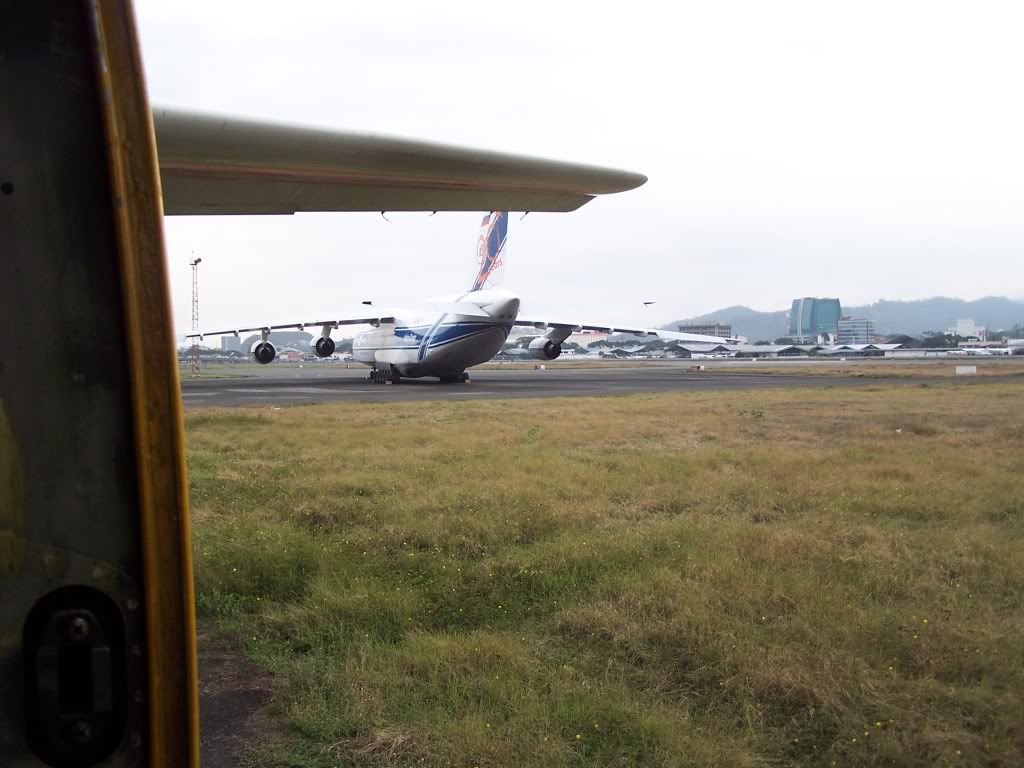|
What do this: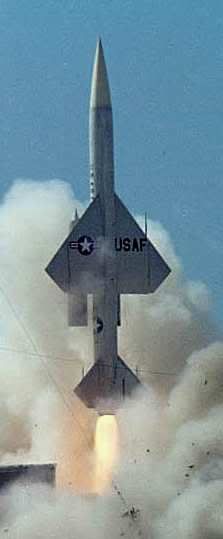 this: 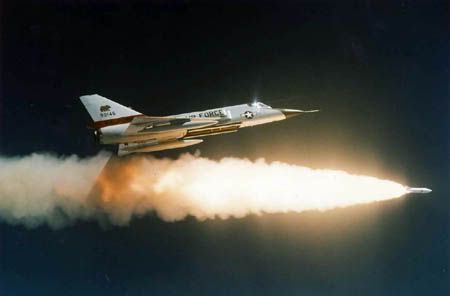 and this: 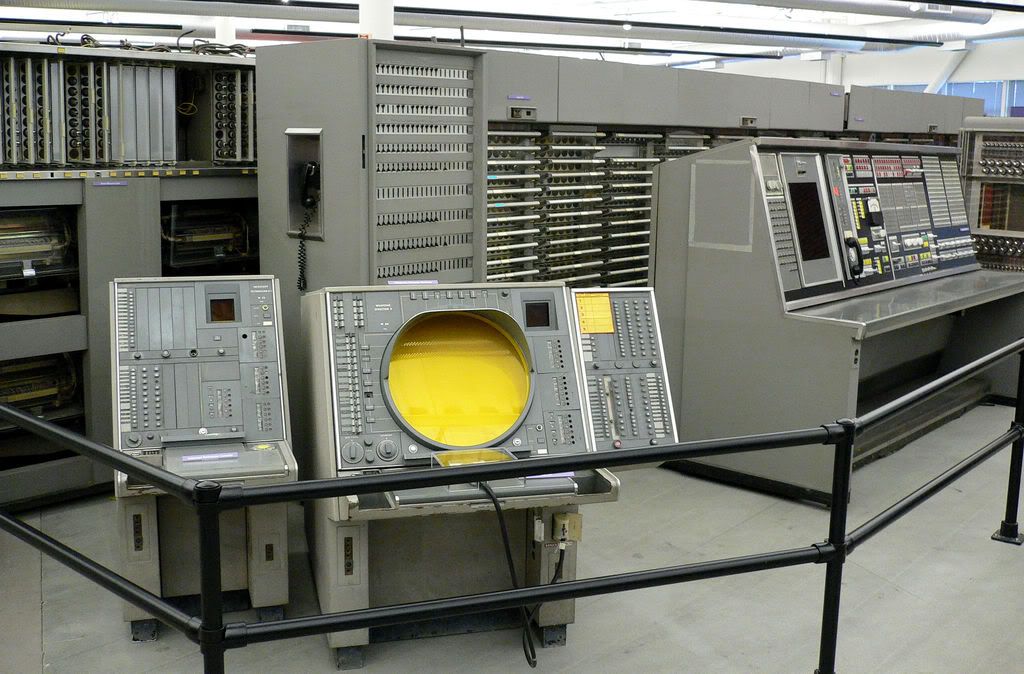 all have in common? You're about to find out. Throughout the history of air warfare, there has been a continual seesaw between offense and defense, bomber and fighter. The first things of a military nature to take to the air were balloons, and later, aircraft, that were intended to observe and report back to the ground on the movements that enemy forces were making. Of course, this led the other side to develop fighter aircraft to try and shoot down said observation platforms, which led to the development of aircraft to protect the observation platforms, and then some genius (specifically, Sottotenente Giulio Gavotti during the Italo-Turkish War in 1911) figured that if he was flying over enemy formations to observe them, why didn't he take some explosives to drop on them? This was indeed a good idea, and the end result was that by the conclusion of the First World War both sides had developed "heavy" (for their time) bombers that were launching strikes against industrial targets on the home front of the enemy. (Granted, these strikes were quite ineffective, but I'm not arguing the merits of strategic bombing as a warfighting tool; it's the thought that counts here). Fast forward to the beginning of the Second World War. At this time it is thought that the advantage lies predominantly with the bomber, because bomber aircraft (like the B-17, for example) had advanced technologically to the point where in terms of speed and altitude they were the equal, if not the better, of fighter aircraft. Their speed meant that there would be minimal warning time to scramble interceptors, and their altitude meant that those interceptors faced a long haul to get within striking range of the bomber formations. These technical limitations led to the widespread belief that the unescorted bomber would always get through, espoused chiefly by airpower advocates like Giulio Douhet, Hugh Trenchard, and Billy Mitchell, and therefore that spending money on defensive fighters was pointless, that it was better to build up the offensive bomber forces as a deterrent. Look at this pimp motherfucker. You gonna tell him he's wrong?: 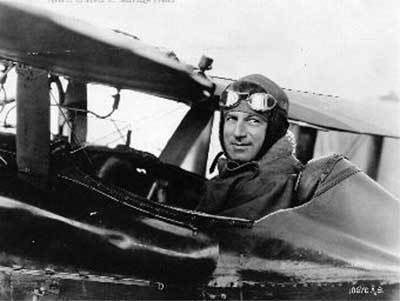 Anyone who is remotely familiar with the history of strategic bombing in WWII knows that this belief was fatally flawed, due primarily to the introduction of radar. This key invention gave the defenders advanced warning, enabling them to scramble interceptors ahead of time to be waiting for the bombers at altitude. The losses among unescorted bombing missions were steep; the 8th Air Force (the primary USAAF strategic bombing force in Europe) suffered some of the highest casualty rates of all U.S. forces. Obviously the system was more complicated than just radar and fighters, there needed to be a control center to track and plot the location, speed, bearing, and altitude of both the incoming enemy aircraft and the defending interceptors. During WWII, with piston engined bombers having cruising speeds of around 200 mph, the use of manual plotting boards such as this one was more than adequate: 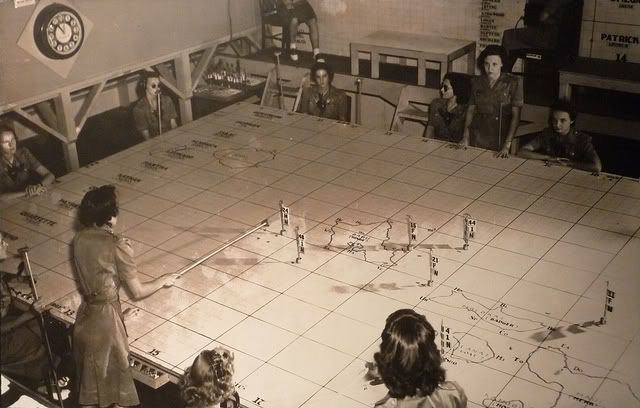 However, as WWII drew to a close, a new technology began to enter use: the jet engine. This enabled much faster speeds. While the technical issue of physically intercepting the bombers was solved by the development of jet engined interceptors with similar performance, the much faster speed of jet powered bombers compressed the amount of time that defenders would have to respond; in short, the issue was not the physical intercepting the enemy bombers, it was everything prior to that was necessary to get the interceptor in a position to engage the bombers: initial detection, determining speed, range, bearing, and altitude, developing a track predicting where the enemy bombers would be next, scrambling the intercepting forces, and guiding them to the point where they were able to intercept the bombers. This time compression meant that a manual system as had been used in WWII would be overwhelmed and would inevitably let some bombers through. While this may not have been a big deal (after all, even in the darkest days of the 8th AF's raids in Germany, the majority of the bomber force got through, albeit suffering grievous losses). The second problem was the development of the atomic (and then thermonuclear) bomb. With one aircraft able to cause that amount of devastation to an entire city, a system that would let even one aircraft through was viewed as unacceptable. Finally, any system would have to defend the length of the U.S. border, going up and down both coasts and across Canada. The threat: 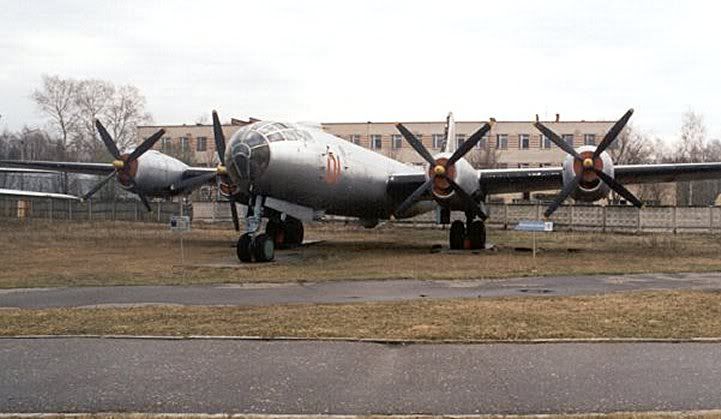 Tu-4, Soviet clone of the B-29 that is an interesting story in and of itself. 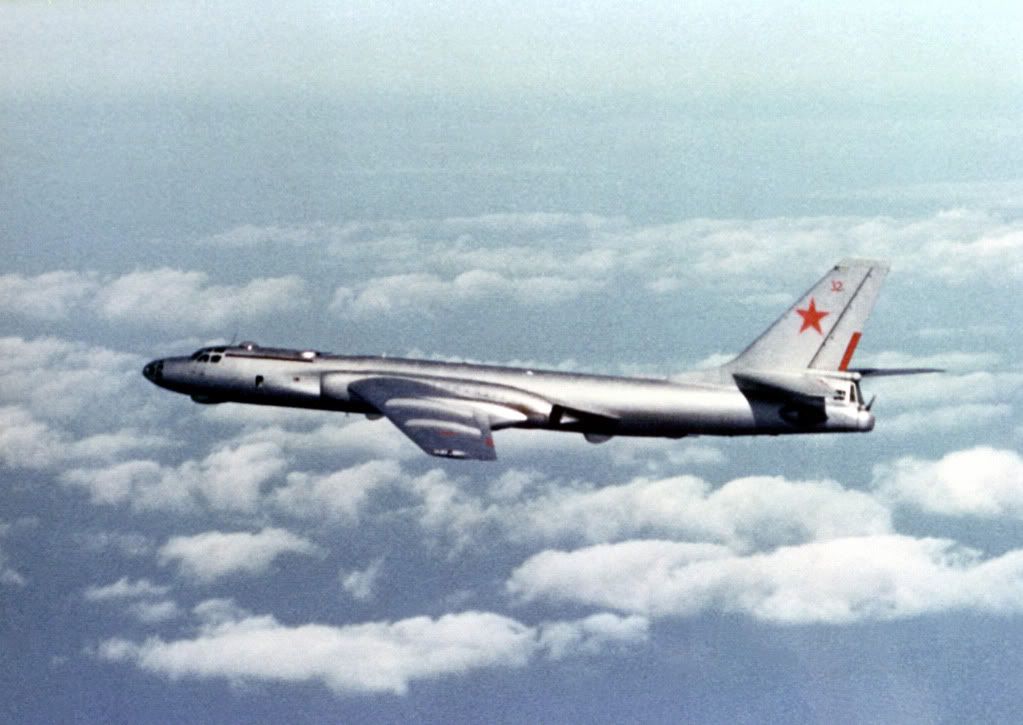 Tu-16 Badger, the rough equivalent of our B-47. 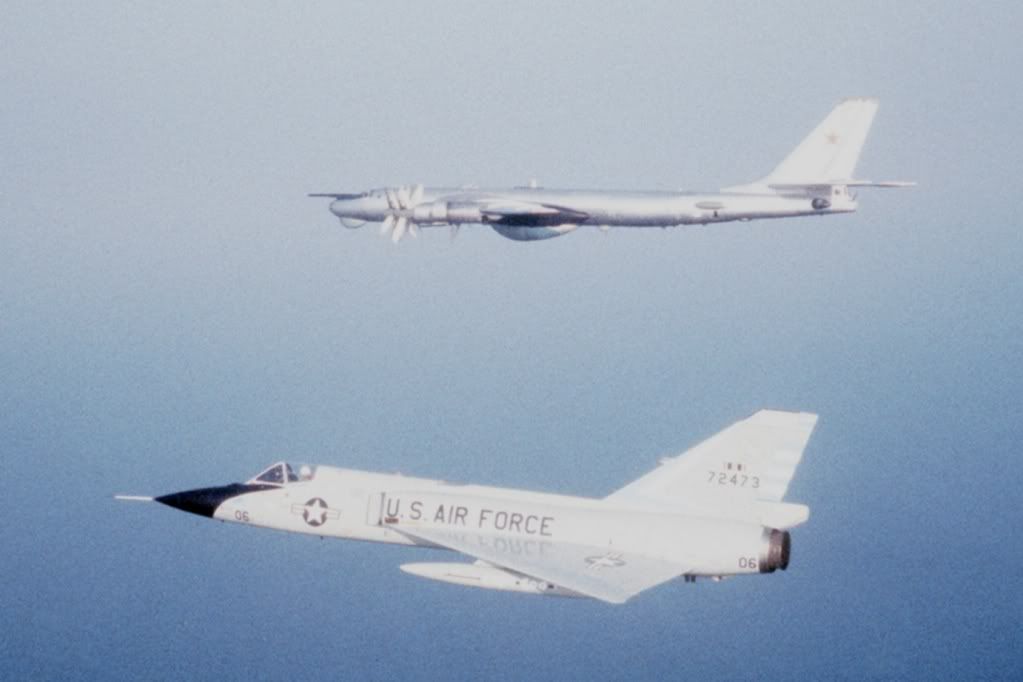 Tu-95, the ubiquitous Bear, the fastest propeller powered aircraft ever built (it was only about 50 kts slower than its U.S. turbojet powered contemporary, the B-52) being escorted by an F-106 in the early '80s, probably right around when SAGE was being replaced. 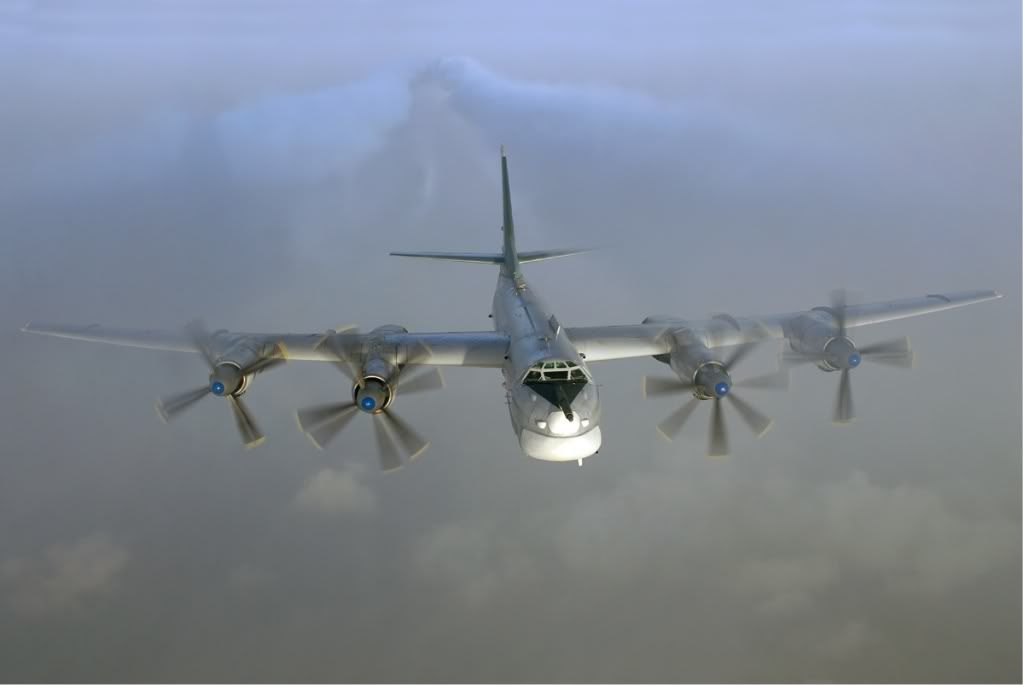 Bonus picture just because I thought it was pretty slick. So, the solution? Developing some sort of autonomous system that would use one of those new fangled computer things linked with a bunch of radar sites to control the communication and basic management, so all the controller would have to do was tell the computer which assets to attach which targets. To back up a bit, the Navy had given a contract to MIT during WWII to develop a computerized flight simulator that would enable a more realistic simulation than their current Link Trainers (picture just because they look so ridiculous):  The program was given the name Project Whirlwind. The project started off building a large analog computer, but the analog nature of the system made it impractical to control a large complex system like a flight simulator (the machine would've been huge, if it was even possible to construct in the first place), so after a member of the team saw a demonstration of ENIAC they began developing a digital machine. The machine they designed was one of the first to conduct operations in 16 bit bit-parallel mode as opposed to bit-serial mode. Additionally, the ever changing requirements demanded by a flight simulator meant that the Whirlwind couldn't run in batch mode, instead it was required to run in real time. It was the first computer to do so. I won't get further into the technical computing details, because that's not my area of expertise, but suffice to say that the Whirlwind introduced many new ideas to the world of computing technology and describing it as revolutionary would not be inappropriate. Here's a few pictures, specifically of the memory core: 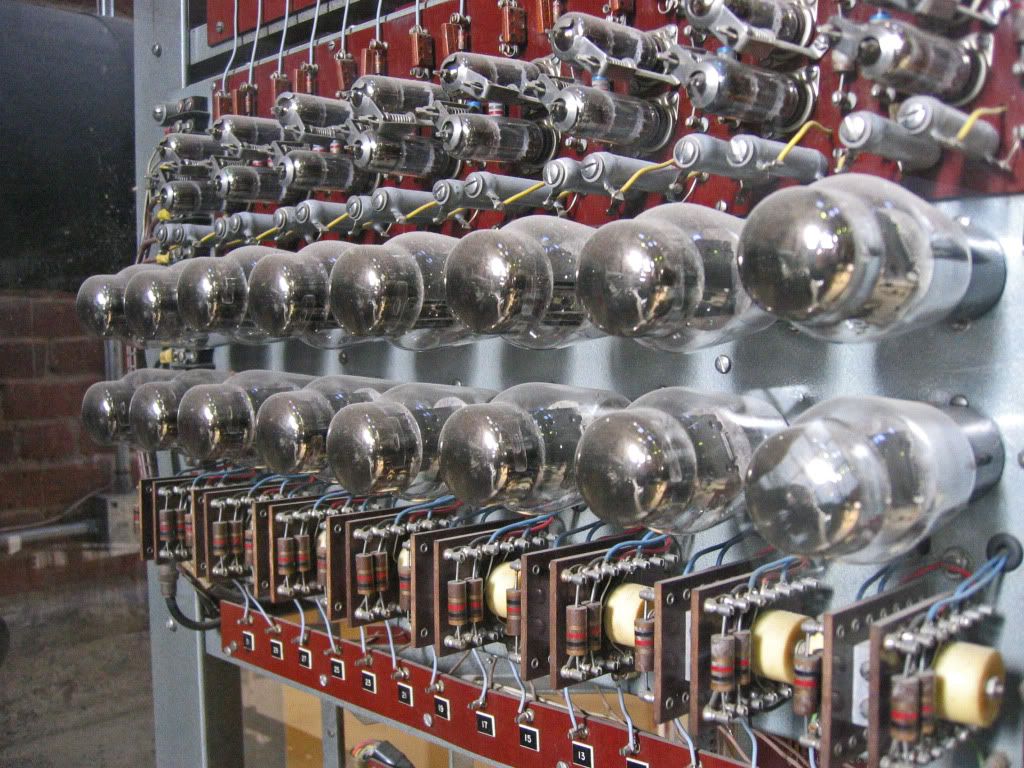 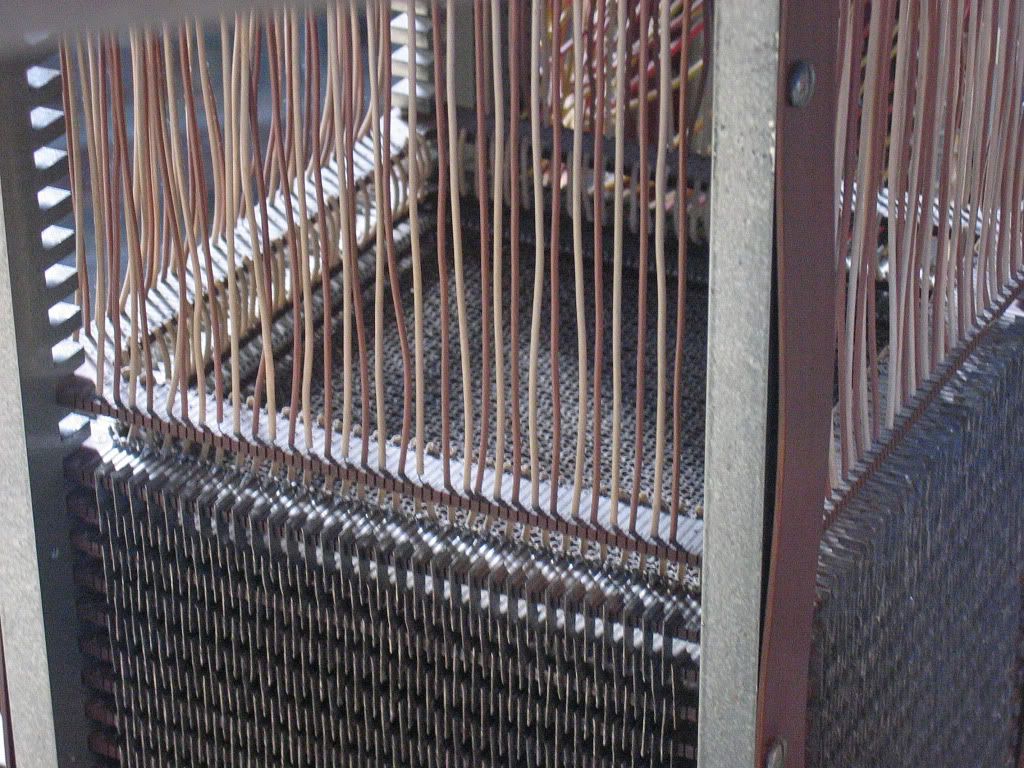 Construction of the computer began in 1948, employing 175 people, taking three years, and costing $1 million a year (in ~1950 dollars). The computer first went online in 1951, but by this point the Navy had lost interest in the project due to the length of development and its cost. However, the Air Force was beginning to develop the autonomous defense system I mentioned earlier, and the Whirlwind seemed tailormade its requirements: lots of computing power, large memory, and capable of real-time operations. The Air Force picked up development under the name Project Claude, and began linking the computer with various radars in and around New England (using that location as a test area made sense since the computer was located on MIT's campus in Cambridge). 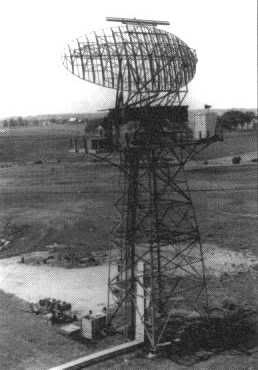 Long range AN/FPS-3 radar The so-called Cape Cod System was an absolute success, and provided the Air Force with the justification needed to proceed forward with a full on nationwide program. Work initially started on the Whirlwind II, but the project overwhelmed MIT's resources so the design was shelved and the program shifted to first RCA and then IBM. The new machine was called the AN/FSQ-7, which while being inspired by the Whirlwind II design was a completely new machine. While the AN/FSQ-7 was being developed by IBM, the MITRE Corporation was founded in Massachusetts in the late '50s to take over management of the entire program from MIT's Lincoln Laboratory, to include the AN/FSQ-7, the buildings, power supply, communications, and systems integration provided by Western Electric, the phone lines provided by Bell Systems, and the 500,000 lines of assembly language provided by the System Development Corporation (quite possibly the world's first software development company). A few statistics about the AN/FSQ-7: It is the largest computer ever built, using 55,000 vacuum tubes, covering a half acre of floor space, weighing 275 tons, and using three megawatts of power. 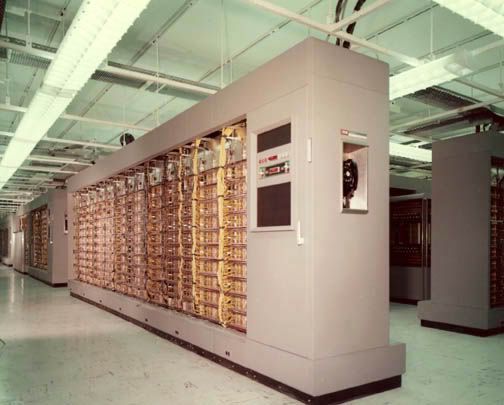 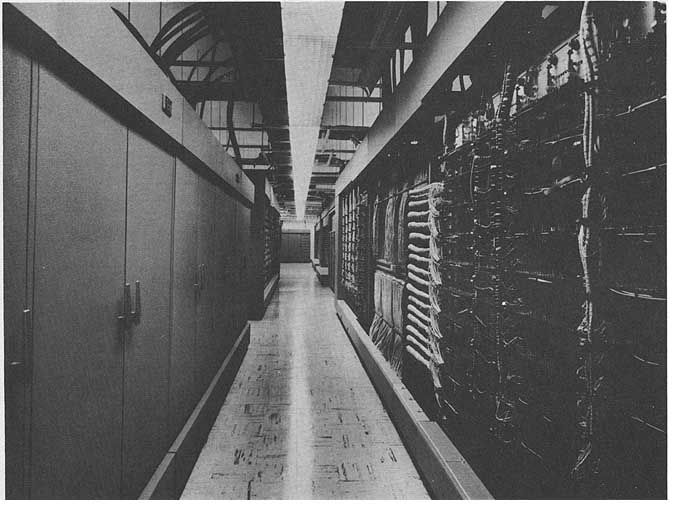 However, the AN/FSQ-7 was only the heart of SAGE...without all the other components, it would just be a large computer operating in a vacuum. The focal point of SAGE was each SAGE center facility, a 4 story nondescript concrete blockhouse: 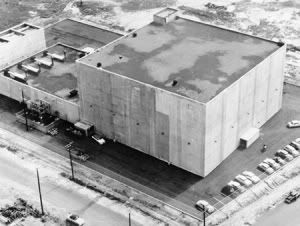 These centers were fed information from a variety of long, medium, and short range radar sites to ensure total coverage of the airspace at all altitudes; these sites converted the analog radar outputs into a digital signal that was then sent via modem to the SAGE center. The computers (there were two at each site for redundancy) then took the information (range and azimuth) and displayed it on a CRT screen, where controllers could interpret and act on the information using a light gun that allowed them to select a given target and order the system to display additional information about that particular target. If the controller needed altitude information about a given target, he could make a request of the radar site, where all a controller had to do was center the cue on the target and press a button; the altitude information would be sent automatically to the requesting controller back at the SAGE center. Engaging the targets was similarly easy. The system kept the controllers advised as to the status/availability of all the defensive systems in a particular sector (more on those in a bit); all a controller needed to do was make the decision to intercept a certain target. At that point instructions would be sent to the nearest radar station via teletype at which point the local radar station would take control for the intercept, either engaging with SAMs (Surface to Air Missiles) or directing aircraft to engage. All the aircraft had to do was, if they were older, follow the radio instructions or, if they were newer, plug the SAGE directions into the aircraft's autopilot and fly a hands-off intercept, letting the computer maneuver the aircraft into firing position. What means did SAGE have to engage targets? Since each one of these programs could (and maybe will) comprise a post of their own, I will try and be brief. First, the SAM systems: 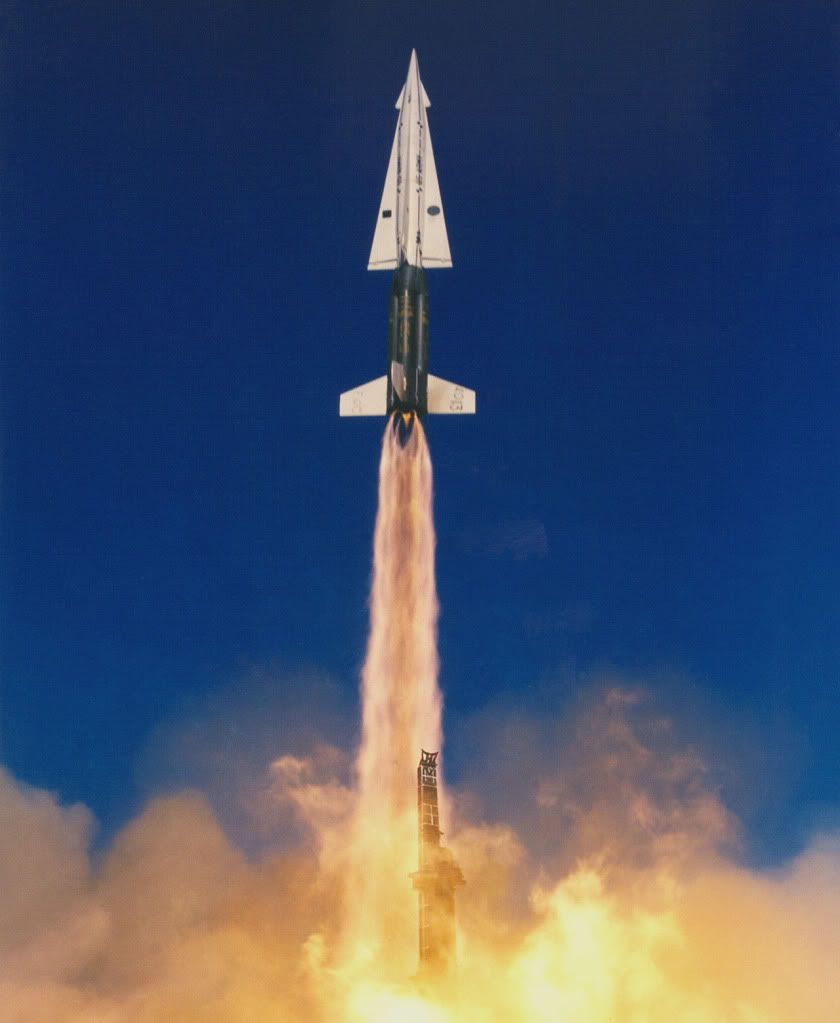 The Nike Hercules was a development of the earlier point defense Nike Ajax system. It had a maximum range of 90 miles and an altitude limitation of 150,000 feet (it was later developed into the stillborn Nike Zeus ABM system). It engaged targets at a speed around Mach 3.65 and (like many air defense weapons of the era) was armed with a low kiloton range nuclear warhead. The Nike Hercules, like most other SAM systems, was operated by the US Army. 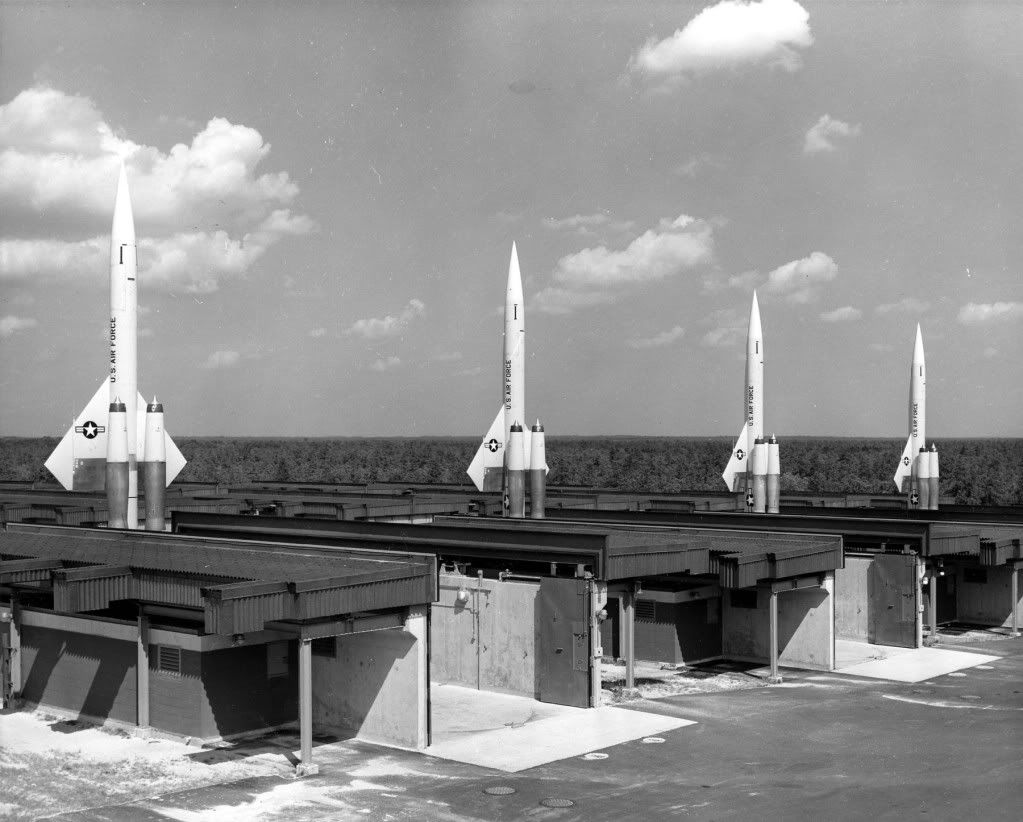 However, the CIM-10 Bomarc was an exception to this rule. It was, and remains, the only SAM system ever to be operated by the US Air Force. To call this missile a "SAM" is perhaps a bit of a misnomer, as it was originally given an F- designation (for "fighter,") because it really was a pilotless suicide fighter with ramjet engines. It had a range of 200 miles with a cruising speed around Mach 2.5 and was armed with a low kiloton range nuclear warhead. The Bomarc was intended to engage Soviet bomber formations while they were well offshore, thinning their numbers so the Nike Hercules systems and manned interceptors would have better odds of killing the rest. Speaking of which, here are a few of the major interceptors that were developed during the time frame:  The F-89 was one of the first jet powered interceptors developed after WWII; you can see this lineage in its relatively conventional layout: straight winged with a high t-tail. Unfortunately, development on the aircraft was relatively protracted, which led the USAF to start a stopgap program, which led to 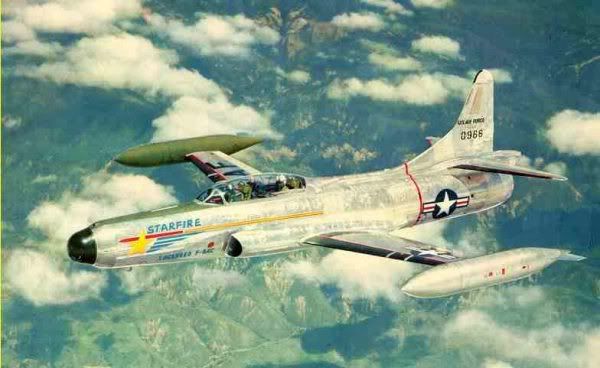 the F-94, which you may recognize as looking somewhat similar to the T-33 T-bird trainer. This is because the F-94 was nothing more than a T-33 with a radar, anti-aircraft rockets, and some more powerful engines. Speaking of anti-aircraft rockets, these early interceptors were armed with 2.75'' folding fin aerial rockets (FFAR), which were similar in concept to the rockets that the Luftwaffe armed its Me 262 jets with during WWII. You pointed your aircraft at an enemy bomber and fired the rockets; there were theoretically enough rockets in a given cluster to saturate a bomber sized target. Here's a good look at what a typical nose FFAR installation on an F-94 looked like: 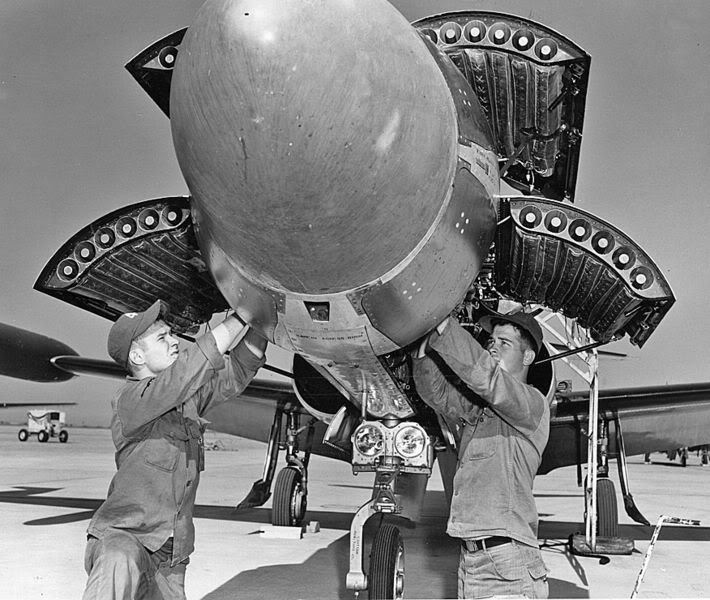 Three main problems with this armament: first, it required you to get very close to the enemy formation, meaning your intercept time was longer, second, you could only carry enough rockets for one (maybe two at the most) bomber sized bursts, and third (and more importantly) the FFARs were, to be blunt, absolutely lovely. There are numerous cases of a target drone flying out of control where the accompanying interceptors that were supposed to shoot it down in case just that event occurred were unable to do so because all their rockets missed. There is even a documented case of an interceptor accidentally locking on to the aircraft towing a banner during a live fire target practice sortie and cutting loose with an entire load of rockets at point blank range; the towing aircraft was completely unscathed. The solution was to develop guided missiles (such as the AIM-9 Sidewinder and the AIM-4 Falcon) that could actually home in on a designated target. The issue now was that new aircraft would have to be designed, because the current crop of interceptors lacked both the payload to be able to haul and the avionics capacity to be able to guide these new missiles. Additionally, there were some significant advances in aerospace technology in the late '40s/early '50s that could be included in the new generation of interceptors. The most significant family is the delta winged F-102/-106 series of jets. The F-102 started off as an absolute failure, a fighter that was supposed to travel twice the speed of sound yet was unable to go supersonic. Fortunately for it, a very smart guy by the name of Richard Whitcomb developed the area-rule concept and saved the design: 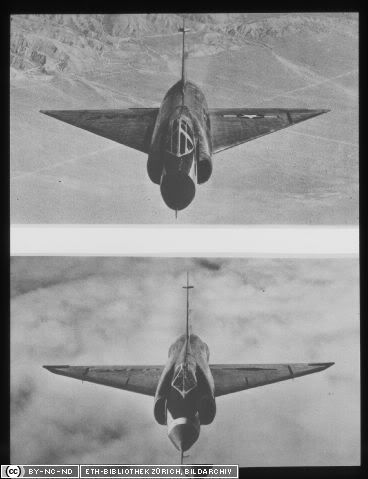 (Non area ruled on top, area ruled on bottom) In doing so, he created the classic "coke-bottle" fuselage shape that was to define American fighters for the 1950s. However, the F-102 still faced some major issues, most of which were with its top speed (it still only topped out around Mach 1.22), its engines, and avionics capability. This led to the follow on F-102B that had so many design changes made that it became the F-106: 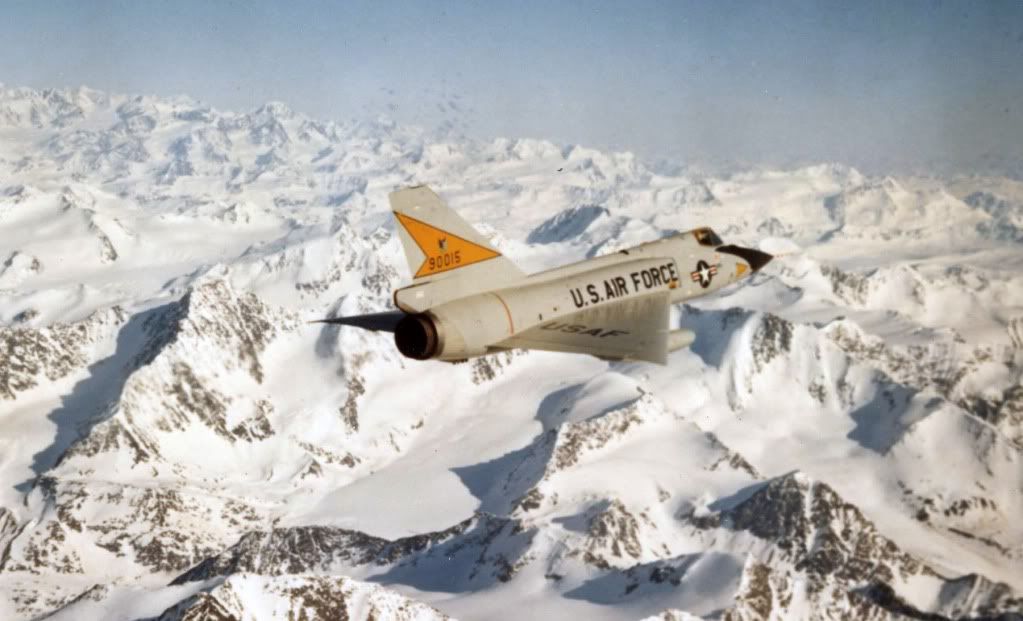 The F-106 boasted Mach 2+ speed and the Hughes MA-1 fire control system that enabled true hands off SAGE controlled intercepts. As an interesting side note, the picture of the F-106 at the very top of this post is of one launching an unguided MB-2 Genie air to air rocket...that was armed with a low kiloton yield nuclear warhead. The F-89 was also capable of carrying the same rocket, while both the F-102 and the F-106 were able to employ the guided subkiloton nuclear armed AIM-26 Falcon (a development of the AIM-4 I mentioned earlier). In the cases of the F-102 and F-106 (both of which were flown by a single pilot without a backseat radar operator), arming these aircraft with nuclear weapons was the only time during the entire Cold War when the two man concept was ignored when dealing with nuclear weapons. There are other interceptors that I could talk about, but those are the highlights and in the interests of space I will refrain from further discussion. Since I am a military officer, no brief would be complete without a nonsensical slide featuring crude diagrams with lots of interconnected arrows that makes little sense: 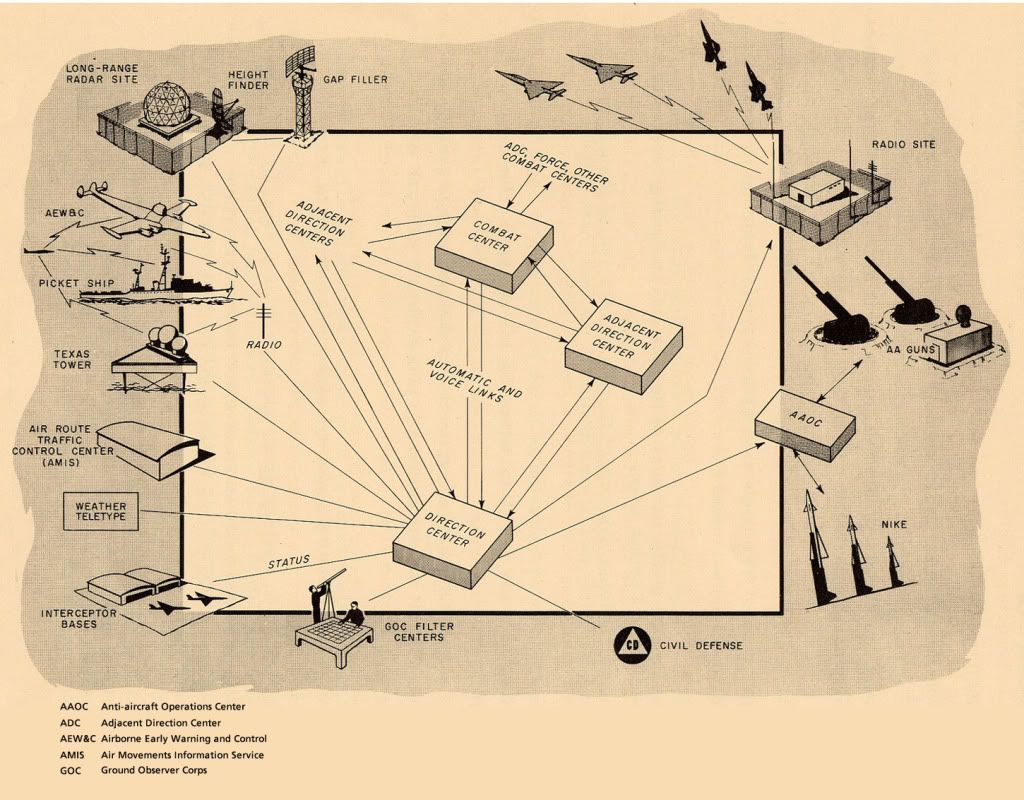 I actually think this diagram does a fairly good job of showing how exactly SAGE was supposed to work. Altogether there were 22 Sector Direction Centers (first line centers) and another 3 Control Centers (higher echelon more supervisory in nature) that were built between 1957 and 1963 (the year the system was fully operational), with another set up at CFB North Bay in Canada (it was intended to be the Canadian counterpart to the NORAD command post in Cheyenne Mountain and as such was located underground instead of in an above ground blockhouse like the other centers). The total cost of the program was around $8-12 billion (with a b) then dollars, which works out to be around $70 billion modern day...which is more than the cost of the Manhattan Project (there's some irony somewhere in there). The real irony is that the same year as the U.S. started construction on the SAGE system, the Soviets launched this bad boy: 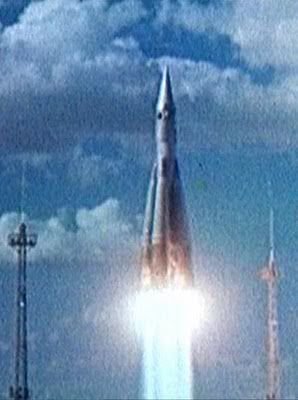 That is the R-7 Semyorka (NATO - SS-6 Sapwood), the world's first true ICBM. The Soviets began deployment in 1959, with between 6-8 deployed by 1963, each armed with a 2+ MT warhead. In a stroke, the SAGE system was completely obsolete. It remained in service until 1983, providing air sovereignty and enabling the identification, tracking, and intercept of Soviet flights up and down the East Coast, but it ceased to serve a truly useful purpose for the defense of the country as soon as the Soviet's began deploying ICBMs. This is not to say that SAGE did not have a significant effect on the world, it was just not in its intended purpose. The most significant is regarding air traffic control. For all intents and purposes SAGE was just an air traffic control system that happened to intend to destroy a sizable number of the aircraft it was tracking, and it heavily influenced the FAA's later systems. Additionally, a chance encounter on a flight between an American Airlines executive and IBM programmer who worked on SAGE led to the development of the SABRE reservation system, of which IBM used much of the expertise it gained on SAGE. Then there were the technical aspects, like the first real-time CRT based user interface and the use of wide area communications via modems, not to mention all the specific achievements of the Whirlwind and AN/FSQ-7 computers. Okay, that about does it I think. Hopefully you made it all the way through that without falling asleep, maybe you even learned something. Here's a few links in case you want to read further: http://www.americanheritage.com/articles/magazine/it/1999/3/1999_3_56.shtml - Interview with the author of a book about the secret triumph of American engineering, from American Heritage of Invention and Technology; one of the programs he looks at in the book is SAGE. Not necessarily SAGE specific, but good reading from a systems design/engineering approach. As an aside, that magazine has some very good articles in general...it's gone a little downhill in recent years (they had an ownership crisis and a few other things) but I believe most if not all of their archives are available online. Discusses the most random things, from the introduction of the electric chair to the development of the zipper to how the aircraft carrier became the new capital vessel. Well worth looking at if you're into that sort of thing. http://www.radomes.org/museum/equip/fsq-7.html - Webpage with a lot of technical details on the AN/FSQ-7 along with some good period pictures. http://www.airspacemag.com/history-of-flight/thin_aluminum_line.html?c=y&page=1 - Good article from the Smithsonian's Air and Space Magazine on some of the more practical aspects of air interception during the Cold War/SAGE. However, it's worth mentioning that while air defense was definitely a lot hotter during the Cold War, there are still fighters standing alert 24/7 and we still go up every once in a while to intercept a Bear or two: 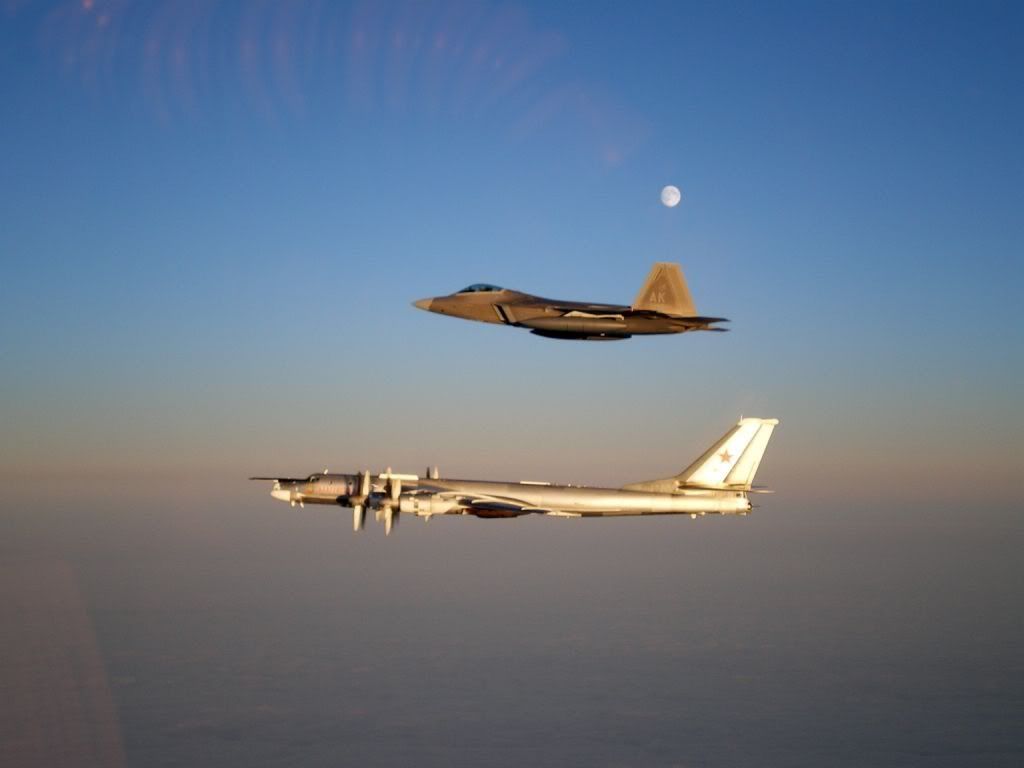 Newest chapter in the long air defense history here at Elmendorf. Possible topics for future discussion: - The Tu-4, mentioned earlier in this post - The AIM-9 Sidewinder, the first guided air to air missile (still in service today) - The British V-Force deterrent bombers - Weird nuclear weapons: Atomic cannon, Davy Crockett atomic recoilless rifle, the Blue Peacock chicken powered nuclear mine (no, not making that up), nuclear depth charges, ASROC, the man portable SADM warhead, etc. - Suggestions?
|
|
|
|

|
| # ¿ Apr 27, 2024 17:26 |
|
Thanks, glad you all liked the thread. While I was too young to really remember the Cold War (my first memories of stuff like that are the Gulf War), I have a soft spot for it because it truly was a different time, as many of you have pointed out. I don't think people today who didn't live during the time can fully appreciate the situation of living knowing that if a flock of birds was misinterpreted or a mentally unbalanced individual got control of one silo (I'm exaggerating of course...but not by much) we could be looking at the complete destruction of most of the developed world. This fact generated some downright crazy ideas in military hardware (i.e. - Nosmo's entire list), as well as the will to develop them and the money to pay for them. Now, I don't mean to sound like someone pining for the Cold War, because its end was a good thing, nor do I mean to sound like someone that would like to return to Cold War levels of defense spending, because vast amounts of money spent on the military is never a good thing for society (I say this as a serving officer). However, there was a certain feel to the military and military equipment of the era that just isn't there today, in my humble non-educated opinion. That's not necessarily a good or bad thing, but it was truly a different era. Apologies in advance, mega huge quotes post follows: Dividend Special posted:Sup Elmendork buddy? Air Guardsman here, we're moving to your house pretty soon. February's the word. Yeah, you fuckers are going to have nicer poo poo than us thanks to all that BRAC money. BaronW posted:Great article! Is there a good aerospace history book with more like this? Do you mean on SAGE specifically or Cold War aerospace history in general? As an aside, you all can have your prima donna XB-70, B-58, and B-1 (seriously, one never entered service, one was in service less than a decade, and the other had one of the longest development cycles of an aircraft and then had a horrible teething period once it finally entered service), I'll have my old girl the BUFF anytime. And it would figure that Cyrano is in to some outlandishly expensive German derived freak. Flanker posted:I love cold war stuff, but it usually ends up reminding me of Canada' insistence on marginalizing itself and over-relying on the US, which is still biting us in the rear end to this day. Thanks for nothing Diefenbaker and every subsequent PM. gently caress. CF-100 was pretty tits and actually entered service (unlike the Arrow  ): ):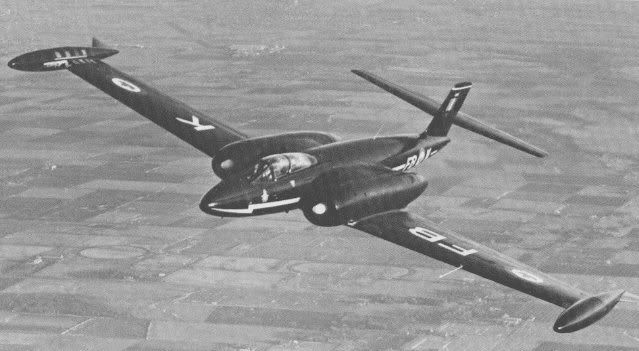 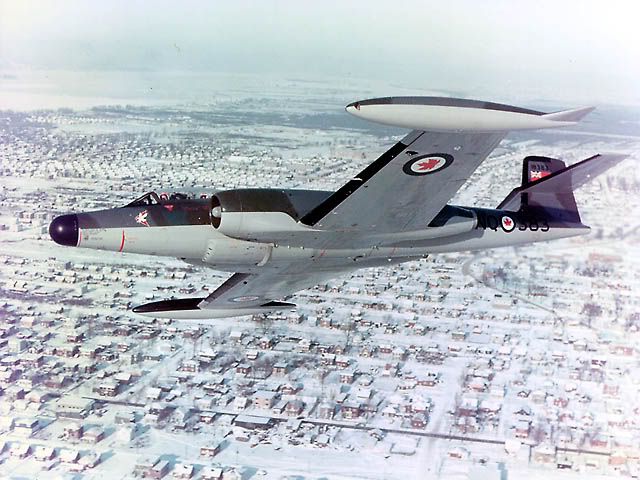 Captain Novolin posted:
This story is loving hilarious. Ygolonac posted:And don't forget - they have have been enormous masses of metal trundling along overhead ("magnesium overcast"), but some things are bigger and more powerful yet. This picture is awesome. I can honestly say I have never seen this before, which is really saying something when it comes to military aviation history related pictures. NosmoKing posted:I wonder what the difference in the stall speeds are between the two planes? IIRC, big and slow bombers or planes patrolling the edge of airspace would sometimes drop speed WAY back as a means of loving with fighters charged with shadowing them. The fighter simply couldn't go that slow. You recall correctly, that is one of the many ways they would gently caress with the intercepting/escorting fighters. Another was to slowly turn out to sea, hoping to drag the fighters with them beyond the range at which they could safely recover. And remember, like I said in the original post the Bear isn't that slow of an aircraft...I don't know what its stalling speed is, but it's performance is fairly comparable to a B-52, so I would imagine its stalling speed is as well (it has a 35 degree wing sweep, after all). Propagandalf posted:
Do you know the story behind the first picture? Quite a bit more interesting than a random Soviet intercept, but I'll let you tell it if you know it. The second picture owns. Mr. Despair posted:I live just outside of Ellsworth AFB, so this thread is all sorts of awesome. First off, that picture is sweet. Second, you need to get to that museum. It's not AWESOME or anything on the scale of the Air & Space in D.C. or the Air Force museum at Wright-Pat, but it is definitely respectable. I randomly stopped in while I was driving through the state on my way up here and wound up spending a couple of hours there. I also took the time to detour off the interstate to go see the Minuteman Missile National Historical Site, which is WELL worth your time, especially if you live in the local area. They have two sites, one is a Launch Control Facility (control capsule) and one is a Launch Facility (actual silo). They are VERY well preserved, and seriously, if you are in to that sort of thing I can't emphasize enough how much you need to check it out. Propagandalf posted:MST3k's The Starfighters "So basically, according to themselves, the Air Force is a bunch of leather-faced, not-so-bright, heavy drinking, dull-witted speed-freaks who poop in their pants and can't make it with women, right?"    ACTUAL CONTENT!!!!!!!!    The discussion of missile launching videos caused me to go dig up this animation...while there are some things that are incorrect, it gets most of it right. Good enough to be shown at Air Force officer technical training: http://www.youtube.com/watch?v=6kLOXZ3-7VM This second video was also good enough to be shown at Air Force officer technical training, but for an entirely different reason. It is a production of the BBC called "Nuclear War: A Guide to Armageddon." It was done by Mick Jackson, the same guy responsible for Threads. This movie was actually done about two years before Threads and can be seen as the textbook to Threads' fiction novel. Instead of talking to us about the effects of nuclear weapons, they showed us this film. It featured revolutionary special effects that, in my opinion, stand the test of the time rather well. Of particular note is how it coldly and logically disproves every single Civil Defense recommendation on sheltering/surviving nuclear war. It's overarching message is the same as Threads: very few will survive a nuclear exchange, and those that do will consider the dead the lucky ones. Part 1: http://www.youtube.com/watch?v=2Lun5UVZOG4 Part 2: http://www.youtube.com/watch?v=J_Ew9EAG4ss&feature=related My third video is also related to a nuclear war drama, but this time in the U.S. I'm sure most of you are familiar with The Day After, and you probably remember some scenes featuring U.S. military personnel attempting to respond to the initial attack before the warheads strike. You may even remember that these were actual U.S. military personnel. What you probably don't know is that the scenes were clipped from a longer "drama" portion of a documentary called "First Strike." Now, ignoring the fact that "First Strike" was produced by the Team B/CPD folks and drastically inflated the actual threat posed by Soviet nuclear forces, if you are in any way interested in the Cold War military, you MUST watch this film. I'm not sure what my favorite '70s kitsch bit is because there are so many, and I don't want to ruin it for you, so I won't comment any further. But seriously, watch it...it was filmed with the full cooperation of the DoD, so all the people in it are U.S. military members, U.S. military equipment, the whole shebang. Here's the clip that contains the nuclear war :drama" portion: http://www.youtube.com/watch?v=jlPEBROvR9w The rest of it is also available on youtube, but it's the documentary part and just basically features a bunch of old white guys talking about how the Soviets are way ahead of us in nukes and ICBMs and bombers and everything else. Oh yeah, almost forgot.... thats not candy posted:Awesome thread, great read!  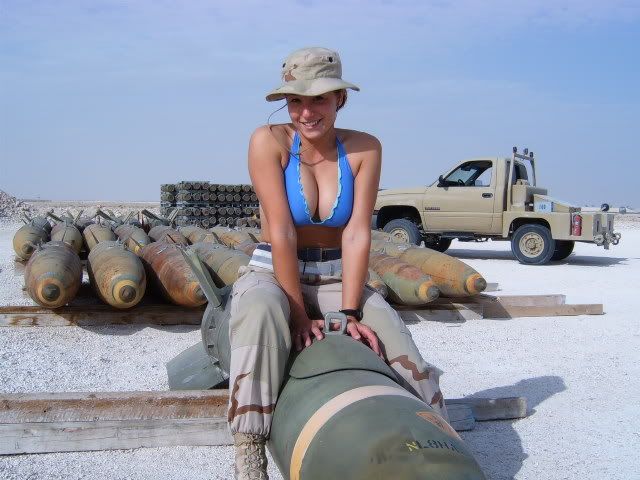
|
|
|
|
BadgerMan45 posted:They still use at least one of those drat SAGE blockhouses to see what happens when you cram a couple hundred people into a building with no windows and make them walk up and down really narrow stairwells all day. Fortunately, they just pulled all the asbestos out of it and I don't think TOO much of it got on me so I should be good. ...is this some sort of military training? I can't see any other purpose to that activity. SyHopeful posted:- YESSSSS THANK YOU - You're welcome. - I will consider it, although I am kind of radar warning system'd out at the moment, although the DEW Line is less about radar warning system and more about let's go build some huge radars out in the loving Arctic. - I was just impressed with his ability to bring a Cold War thread somehow back to WWII Germany. Seriously, that was impressive. - Well, a couple of them did bitch pretty hard about Dief the Chief, so I figure that counts.
|
|
|
|
McNally posted:Dad started his career doing propellant transfer on Titan IIs at Little Rock Air Force Base. His stories of that time involve doing repairs on something or other while up to his waist in fuel (for which he earned the coveted title of "steely-eyed missile man"), noxious fumes capable of melting your lungs, and causing pigs to run up hills, making them lose weight and causing the farmer to sue the Air Force. That story was pretty amusing, and your dad was awesome. Seriously, the fumes those early liquid propellant ICBMs put off were no joke...one exploded after a mechanic dropped a wrench and punctured the skin, causing the tank to leak. The resulting explosion blew the 8,000 lbs warhead several hundred yards away. As for that picture... markoshark posted:Don't suppose there is a 1920x1080 shot of that around is there :*( I'll go ahead and tell the history behind that picture...the contrails in the foreground are of a couple of F-15s operating out of Elmendorf. The contrails in the background are of a couple of MiG-29s...that were on their way over to an airshow in BC...in 1989. So while the Cold War was still going on, the Soviets sent a couple of their top of the line fighters to an airshow in a NATO country. To top it all off, the aircraft stopped over at Elmendorf to top off their fuel tanks before continuing on to BC. The irony there can't be understated; Elmendorf was probably neck and neck with Keflavik in Iceland for sheer number of interception sorties launched from there (and the other satellite airfields, like King Salmon and Galena). I know a few people that were stationed here when they landed, and apparently the flightline perimeter was PACKED with people wanting to catch an up close glimpse of an aircraft of the Soviets, a country that many of them had spent their entire careers viewing as a major threat. Anyway, regarding higher-res pictures, wikipedia has a couple of nice shots. Here is a close up of one of the MiGs, here is a good shot of the escorting Eagles and MiGs flying formation, and here is the one you were originally asking about.
|
|
|
|
Cyrano4747 posted:My family was living in Anacortes, WA at the time and a seven year old me who was totally in love with all things airplanes dragged my parents to the airshow that they were flying to. It was right across the border in BC. I thought it was pretty loving cool, and my parents say that it was quite the mind-gently caress for their baby-boomer brains to be that close to Soviet military hardware. I distinctly remember asking my dad why they had black coverings over the cockpits (it was some kind of tarp thing that just covered the glass) because it irked me that part of it was covered up. Little kid at airshow stories are the best. I was at the Offutt airshow back in '95 when the B-2 "The Spirit of Nebraska" was officially entering service...it was pretty cool being that close to something that had been declassified less than a decade ago. Doubly cool that a next door neighbor of mine growing up had been intimately involved with the development program and got me a copy of the first publicly releasable picture of the B-2 when it was first declassified. I actually had all sorts of cool things like that happen, goes along with growing up less than 15 minutes from SAC/STRATCOM headquarters I guess...I've had a couple of personal guided tours of the E-4 NAOC/NEACP/"Doomsday" plane because not one but two of the squadron commanders that fly it have been personal friends of my family, and one of my sisters is friends with the daughter of the four star that commands STRATCOM. Seeing the marksmen they had deployed on various hangars around where the aircraft was on display along with the ridiculous amount of loaded for bear Security Forces airmen they had physically around the aircraft was cool as well.
|
|
|
|
markoshark posted:Also because i suck and can't provide additional info - Well, others have pointed out Korea/Vietnam as the most obvious, and Cyrano brought up a few more (Arab-Israeli conflict, etc.) To piggyback on what he said, there were MANY times during the '50s that U.S. and Soviet military forces were no kidding shooting at each other. Most of them were related to U.S. (and RAF) penetration overflights by SAC reconnaissance aircraft, most of whom (prior to the U-2) were just modified nuclear bombers. In a few cases the Soviets actually shot down U.S. aircraft, and in one case they were able to capture multiple U.S. personnel from a B-47 crew. There is a very good (and very readable, unlike many of the other works on the subject) book about these overflights titled "By Any Means Necessary." Also, as others have already pointed out, the reasons ICBMs were a game changer were that they enabled quick delivery ("Anywhere in the world in 30 minutes or less, or the next one's free"), were practically impossible to defend against, particularly in a full scale attack involving hundreds/thousands of missiles, and with the development of silos/SLBMs, offered rather defensible employment that required a direct hit from a megaton range nuke (in the case of silos) or detection/destruction of the quietest thing ever put in the ocean (in the case of SLBM subs) to negate. To get off on a bit of a nuclear strategy related tangent because hell, I'm the OP and it is a Cold War thread, you have two basic types of nuclear strategies, counterforce and countervalue. Counterforce is when you target (or threaten to target) an enemy's forces, nuclear or otherwise, in an attempt to disarm him. Countervalue is when you target (or threaten to target) an enemy's civilian population in an attempt to deter him. ICBMs require three things to ensure their accuracy: where they were, where they are, and where they need to be. Reconnaissance satellites ensured the third and increasingly accurate INS ensured the second, but the first was only able to be fully determined if you knew where your launching point was. For land based ICBMs this is no problem, but for SLBMs this could pose a problem. This is why the early SLBMs had a CEP (Circular Error Probable) measured in hundreds of meters instead of tens. Land based ICBMs are generally seen as a counterforce method of employment, especially if they are equipped with MIRVed warheads. SLBMs are generally seen as a countervalue method of employment due to their less accurate nature (although the CEP of the newer systems has lessened this somewhat) and their increased survivability over land based ICBMs--Actually, you know what? I'm going to stop myself right there because this could turn into a whole post in and of itself (Launch on Warning, first strike policy, no first use policy, depressed trajectory SLBM launches, C4ISTAR, x ray pin down, decapitating strikes, Dead Hand, Emergency Rocket Communication System, Airborne Launch Control System...I could go on). Anyway, if there is interest, I could do a post on the various type of nuclear war strategies and tactics. To shift gears a bit, since someone brought up the Soviet conventional forces, any war in Europe was going nuclear quickly, because the only way NATO was able to maintain any sort of parity with the Soviet forces was to ensure the liberal dispersion of tactical nuclear weapons. Hence the whole NATO Nuclear Sharing thing. Of course, it's important to remember that "tactical" nuclear weapons (like the B61, for instance) while being "kiloton yield" weapons quite probably have a yield at least an order of magnitude larger than the bomb that destroyed Hiroshima. "Tactical." Right. In any conventional war scenario, if these weapons weren't used, you'd have the old joke..."Two Soviet generals meet in Paris, one says to the other, 'Oh by the way, who won the air war?'" (Admittedly, things like REFORGER, AirLand Battle, and the development of precision guided munitions lessened this somewhat into the '80s, but I am personally still skeptical of NATO's ability to defeat a Soviet invasion using only conventional forces, even in NATO's heyday of the early to mid '80s.) The Soviets responded to the large number of theater level nukes by deploying the SS-20 IRBM that, in addition to putting pretty much every NATO military facility at risk of very short notice destruction, put NATO nations' cities at risk as well. This would be why the deployment of the Pershings and GLCMs was such a big deal, because far from being a U.S./NATO aggressive move, they evened the playing field. Now not only were Soviet forces subject to the same threat as NATO forces, but Soviet leadership in Moscow was not only threatened by a strategic ICBM strike but also by theater level weapons that would have a much shorter warning time. All this led to the INF treaty that was followed by the CFE, hastening the end of the already thawing Cold War. Now, Russia has since "suspended" the CFE treaty and has threatened to do the same with INF, but that's a story for a different day.
|
|
|
|
Also, it may have gotten buried in my initial huge rear end reply, so here it is again...if you are even remotely interested in Cold War nuclear forces, you MUST watch this video: http://www.youtube.com/watch?v=jlPEBROvR9w
|
|
|
|
NosmoKing posted:One of the SALT treaties limited the number of warheads on an individual launcher to 10. Several of the ICBM's out there were designed to carry more than that. The Trident series was initially designed to carry 14 MIRV's. The SS-18 IIRC was somewhere in the high teens to 20 of the drat things. SS-18 was never deployed with more than 10 warheads per missile. However, they were deployed with 10 warheads...and FORTY penaids, which should give you some idea for how many warheads if could've theoretically carried. Of course, there is a tipping point regarding MIRVed missiles and security, after which point the more warheads per missile you have the less secure you are because you are too vulnerable to a counterforce strike. But this is balanced out by the fact that you can hold on to more of your missiles during a first strike and potentially have enough remaining to credibly threaten your adversary's population after the initial exchange...goddammit, there I go again. I need to just shut up and do the drat nuclear strategy post. Also worth mentioning that the SS-18 was initially deployed with a warhead that had a yield between 18-25 MT. At that yield, you are talking about the complete leveling of anything within 6 or so km of an airburst...suffice to say that the fireball from such a warhead would be HUGE. It was thought that the purpose of such a large warhead on a rather accurate missile was to enable strikes against buried C2 facilities...basically to turn Cheyenne Mountain into Cheyenne radioactive lake. There was also a FOBS warhead developed (but never deployed) for the SS-18. FOBS was some seriously destabilizing/scary poo poo. NosmoKing posted:The Sprint/Spartan missile system was initially set up to cover all the major cities in the US AND the various military installations. There were going to be thousands of missiles in sites all over to protect the US cities. Then the system got cut back to just protecting ICBM fields. Then just a single field. Then it was open for a few days when it got defunded by congress and died. The site in North Dakota with the Missile Site Radar component of the Safeguard system is still there, although abandoned. The Perimeter Acquisition Radar component is still operational in ND; it's part of Space Command's early warning/space observation network. 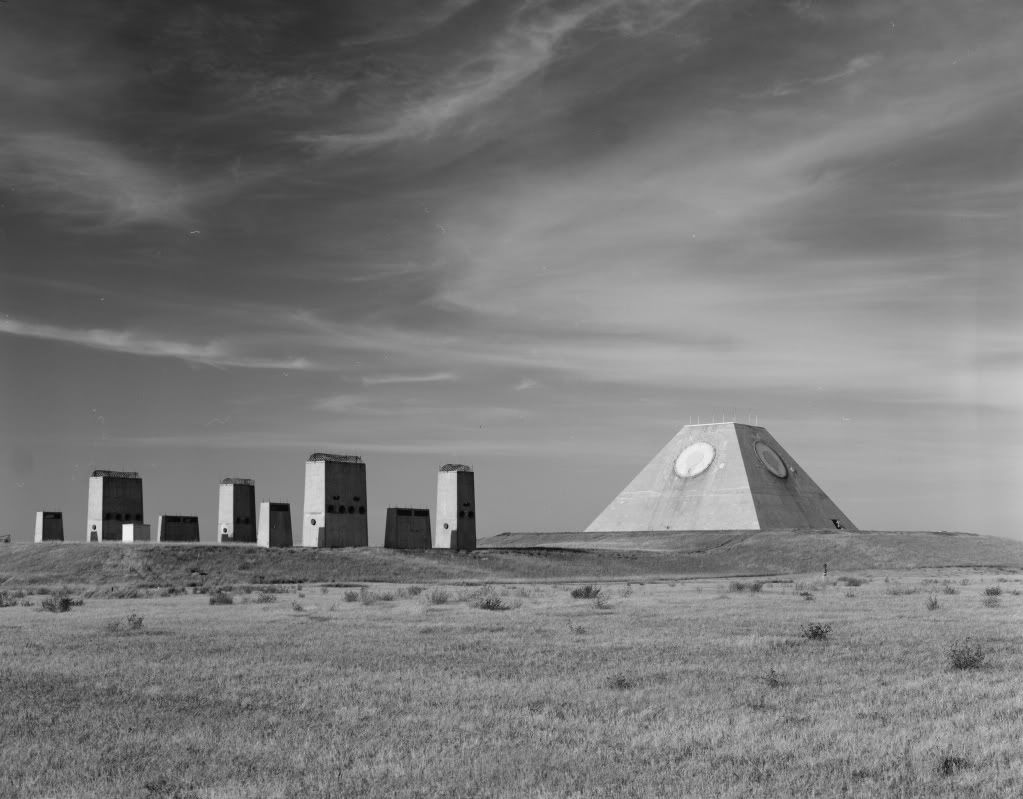 Link to full resolution.
|
|
|
|
That art series contains some seriously cool works, and was surprisingly accurate given that it was depicting Eastern Bloc equipment that we had limited information on.
|
|
|
|
Ace Oliveira posted:Holy poo poo, I didn't know jack poo poo about Cold War airpower, but now I know some pretty interesting poo poo. Maybe if this was an Cold War infantry thread I could participe in it, but this is still interesting as gently caress, nonetheless. Depends on what you mean by "how were"? They possessed an acceptable top speed and range, as well as a respectable payload (8 air to air missiles or a sizable load of bombs) but were not the most maneuverable and suffered dearly in close in combat from their initial lack of a gun on board. But yeah, it's kind of hard to argue with being in service with 12 countries and still being in service with 7 of those, including some countries with relatively modern militaries, like Japan, South Korea, and Germany. Beyond the lack of a gun I addressed earlier, I am unaware of many complaints with their combat users. McNally posted:I had no idea that time travel was so widespread back then, considering the F-15s first flight was in 1972 and the aircraft entered service eight months before Belenko defected with his MiG-25. Yeah, I meant to talk about that earlier...the Eagle was designed to combat the MiG-25 as the West originally conceived of it, which was a high speed high agility bogeyman. When Belenko defected, we realized that we had vastly overestimated the Foxbat's capabilities (which in Propagandalf's defend he did address in his post) but figured what the hell, we're now that much further ahead of the Soviets anyway. The amusing thing is that the Eagle then in turn forced the Soviets to design the Flanker.
|
|
|
|
Propagandalf posted:Pedants gonna ... ped? Dude, you saw the discussion that led to the creation of this thread, right? This thread is built on being a pedant. Edit for content: If you are interested in the history of atomic weapons and the Cold Wars arms race, you need to read Richard Rhodes "trilogy" of The Making of the Atomic Bomb, Dark Sun: The Marking of the Hydrogen Bomb, and Arsenals of Folly: The Making of the Nuclear Arms Race. I own all three but I've only read the first in its entirety...I'm working my way through the second now. However, I've skimmed enough of the third to tell you that all three are excellent and pretty much required reading if you are interested in the subject. The stuff that SAC did under LeMay during the Cold War was rather...terrifying. The level of respect I have for LeMay for his skills as a military leader and manager are only matched by my disgust for his geopolitical views and actions. And in turn, the stuff that the CPD/Team B folks (starting with Nitze and NSC-68) did during the Cold War isn't much better..."THERE IS A BOMBER GAP!!!" "No, there isn't." "Okay, but THERE IS A MISSILE GAP!!!" "Not really." "BUT NOW SERIOUSLY GUYS, THIS TIME THERE IS A MISSILE GAP AND WE NEED TO BUILD STAR WARS TOO!!!" *Several billion dollars of spending later* "Yeah, that was all pretty much exaggerated or outright falsified too." Finally, here's 15 BUFFs doing a MITO departure from Minot during an exercise last year: http://www.youtube.com/watch?v=wJ7niLYSVFo iyaayas01 fucked around with this message at 03:12 on Dec 17, 2010 |
|
|
|
Here's a page with some more info on the toilet bomb: http://midwaysailor.com/midwayva25bomb/Ace Oliveira posted:Basically, how they performed in combat, their armament, maybe even their combat history. I didn't know that the Phantom didn't have a gun on board, for example. That seems like really lovely design decision. Looks like I've got Armyman25 posted:Heh, I love the quotes about how the B-52 can't be expected to be used after the mid 90's. Also great is the argument that the Soviet submarine missile system is good enough to wipe out the bombers and ICBM's, but the US subs, being able to only destroy all the Soviet cities, aren't a credible deterrent to the Soviets. The comment about the BUFFs was particularly retarded because all it is expected to do (as far as nuclear war/the SIOP is concerned) is be a cruise missile carrier...it can carry an advanced cruise missile just as easily as it can carry a legacy one. In fact, if the Cold War had continued another 10-15 years, chances are that we would've phased out most of the ALCMs and went ahead and solved the problems with the ACM, instead of doing the opposite in the name of cost savings (oh, and we'd have a shitton of F-22s... The degree to which Team B engaged in threat inflation is staggering.
|
|
|
|
Armyman25 posted:The best was the guy at the end of part 4 who advocated a return to conscription to build up the military's strength. And drat the 70's had some of the worst suits and hair styles imaginable. To be clear, I only wanted people to watch the "docudrama" first part, with the SAC crews responding to the attack...the other three parts are, like I said, just a bunch of old white guys pontificating on how far behind the Soviets we are and how we need to build more of everything RIGHT NOW!!!! But yeah, some of those hairstyles...especially on the female military members. drat.
|
|
|
|
Ygolonac posted:One issue with nuclear aircraft propulsion was, in addition to all the weight of your reactor and the power-transfer mechanism to whatever engines you're using, there was a minor concern about what was termed "roll-up". The incident you are referring to took place in 1956 at RAF Lakenheath...a USAF B-47 crashed into a storage igloo, causing a fire that overtook the three Mark 6 nuclear bombs that were in the structure. It was a miracle that the high explosives within the bombs did not explode, which would've flung highly radioactive materials all over the place. There were, however, many other incidents of the bombs exploding and doing exactly that. The fears weren't really that the bomb would actually go critical and function as designed (too many safeties for that to occur) but that the high explosives would detonate haphazardly, strewing radioactive materials about. Two incidents in particular, the 1966 Palomares incident and the 1968 Thule incident, both of which involved U.S. nuclear bombs contaminating large amounts of foreign soil, resulting the development of insensitive high explosives to reduce the possibility of this occurring. And I can vouch for that little tidbit about Project Pluto running an air cooled open core radioactive death machine reactor. Glad everyone has been enjoying the thread and contributing...sorry I haven't been around as much the past few days, been having some other stuff I need to work on. Rest assured, I'll have time over the holidays to do a few write ups...right now I'm leaning towards the first being the nuclear war strategies and tactics write up, and the second being an A-1 Skyraider/A-X/A-10 write up.
|
|
|
|
Factory Ten posted:If anyone actually did finish The Dead Hand, can you tell me how it ends? With 50 pages left, my two-year old son got ahold of it and put it...somewhere. Spoiler alert: World War III takes place and we're all dead. This is just a dream.
|
|
|
|
NosmoKing posted:It looks that way, but the ending sets you up for what seems like a crappy sequel. The original bad guy is probably going to come back, or we get some cliche "terrorist" plot line. Before I really get cracking on the nuclear war strategies/tactics post, does anyone have any specific requests for stuff under that umbrella that they'd like to see covered?
|
|
|
|
SyHopeful posted:no but i wanted to brag that i have spent hours making my own map in google maps with the locations of all the DEW line sites on it You wanna do up a DEW line post, by all means...I'm going to be busy with this stuff for at least a couple of days. Flikken posted:Tactical level use against the Soviets in east Germany. Hell, that could be a post in and of itself, what with all the different types of weapons (true tactical level mortars all the way up to theater level MRBMs), but I will definitely include it. I'm sure some of it is still OPSEC, seeing as how there still maybe are tactical nukes deployed in Europe under the NATO Nuclear Sharing thing, but my job has thus far dealt almost wholly with the conventional side of things, so any info I'm able to dig up will be open source. NosmoKing posted:I'd like your interpretation of the shift from MAD to the Regan "sure there's still MAD, but let's talk about how to WIN a nuclear war" during the 80's. That will also certainly be included as well.
|
|
|
|
Smiling Jack posted:I'd do an effortpost on just how insane Team B was, but I'm really tired right now, so I'm requesting that. Yeah, I've mentioned their threat inflation a few times and it has been brought up by other people occasionally (that "First Strike" video I posted was done by the Committee on the Present Danger, which was the "think tank"/whatever where Team B got a lot of their analysts from), but it really needs to be laid out in concrete clear terms just how crazy their stuff was. I would do the post, but I feel like I need to actually read Arsenals of Folly all the way through first, and since I'm still working my way through Dark Sun, that could be a ways down the road. daskrolator posted:Good thread. Ooh...now you're getting into a topic I'm rather passionate about (F-22 and the various types of weapons it can or can't carry). Being a munitions officer at an F-22 base tends to do that to you. If anyone is actually interested in that specific topic I can copy+paste some stuff I wrote up at another place on that (most of it has to do with the -9X and the SDB)...I tend to try and keep myself restrained somewhat when discussing that stuff because I don't want to be "that guy" that inadvertently puts something out in the open that's not supposed to be. But yeah, development of the teen series fighters would also be a good one...maybe that will be next after the ones I mentioned before (which I promise I am actually working on).
|
|
|
|
Groda posted:Now, what makes those fission bombs so special that they destroy cities with less uranium than a few civilian fuel elements? Well, they have mechanisms in place to keep all that fissile material together so that it has a chance to react all at once. I'd like to compare it to how low explosives like gun powder need to be tightly wrapped in order to function as explosives, but that would be a lie. The proximity of the fuel to itself is controlling the reaction, and as soon as the reaction has forced the fuel apart (vaporization etc.) it's over, for now. That whole That said, this Space Gopher posted:Plus, even if the reactor has the decency to not explode at all, you've still got a big hot (in both senses) chunk of nasty poo poo, probably sitting in a pool of jet fuel, melting its way into your runway or some poor bastard's back yard. Again, not Hiroshima, probably not even Chernobyl, but still a disaster big enough to make the news worldwide for the next few weeks. Airborne reactors were environmentally untenable from the start, even among the decidedly non-green defense contractors and Air Force of the era. is also absolutely correct. As I mentioned before in this thread, there were not one but two instances of U.S. aircraft (B-52s, in both cases) crashing on or above foreign territory and having the high explosives on the bombs cook off as a result of the crash, covering the surrounding area with highly radioactive debris. In both cases, a major international incident resulted, and the two cases combined resulted in the ending of the Chrome Dome SAC continuous airborne alert mission. In other news, an incident very similar to this is what drove an earlier mishap involving a Chrome Dome nuclear armed aircraft (although this happened over West Virginia, so no one really gave a poo poo and the bombs didn't rupture or have the high explosives detonate in the crash, fortunately  ): ):
|
|
|
|
Groda posted:Weapons-grade plutonium (nearly isotopically pure Pu-239) has a lower critical mass, and reacts in a way which is more practical for causing a detonation, but the engineering (and science) is the same as uranium. Oh, I get that much, I was just talking about the fact that with the gun type bomb there was little doubt that it would work...smashing two sub-critical pieces of uranium together at a very high speed is going to work. With the implosion design, there was a considerable amount of uncertainty as to whether the shaped charge explosive lenses would be able to compress the plutonium core in such a way as to generate a critical reaction without blowing the plutonium apart before it attained prompt criticality. I'll put it this way...there's a reason why the uranium gun design was first used in the combat drop over Hiroshima while the implosion design was tested first at Trinity before being used for real on Nagasaki. (The scarcity of enriched Uranium may have also had something to do with that, but there was little doubt that the gun type would work...if they had that level of confidence in the implosion device, the Trinity test would have never occurred either.) Groda posted:Not call you on this, but what were these incidents? What was "highly radioactive"? As ming pointed out, the incidents occurred over Palomares, Spain and at Thule, Greenland (owned by Denmark). Both the wiki write ups on the incidents are pretty good, so I'll refrain from going into too much detail...I'm not sure what meets the threshold of "highly radioactive," so I may have misused the term. But in both instances bombs went down over foreign territory and had the high explosives in the bomb cook off after impact, spreading radioactive debris (plutonium, uranium, americium, tritium, etc.) over a considerable amount of real estate, that the U.S. had to go in and clean up, and this of course caused an outcry from the country that we had contaminated. GreglFaggins posted:Well done. Don't think I could improve upon that any, and if I had done it the thing probably would've been 10 times longer than it needed to be. I just wanted to footstomp the fact that Kennan was rather out of step with the rest of the U.S. national security establishment, particularly after the stuff prescribed in NSC-68 began to take effect. There's actually a very good book out there titled The Hawk and the Dove that is about Kennan and Nitze (who was the primary driver behind NSC-68, among other things). Also, I firmly believe that the cry of "No more Munichs"/"NO APPEASEMENT EVER" has done more to damage U.S. foreign policy over the last 60 years than anything else...that is particularly ironic given that Chamberlain's policy at Munich arguably wasn't even appeasement.
|
|
|
|
Armyman25 posted:I mean, we need this to complete the thread: Yeeeeessss.....someone finally commented on the thread title. I was hoping someone would notice that. Edit: Holy poo poo, you weren't exaggerating with the whole "BECAUSE CHAMBERLAIN APPEASED HITLER" thing...they really hit you over the head with it. The bit about "go back to the beginning...Dien Bien Phu" and the description of the conflict there had me pulling my hair out. Bernard Fall is rolling over in his grave (although I guess he wasn't killed until two years after this was made). Actually, that whole thing was rather I was digging the high angle emplacement using the tanks as artillery during the Korea scenes, though. iyaayas01 fucked around with this message at 02:30 on Dec 23, 2010 |
|
|
|
B4Ctom1 posted:The AIR-2 Genie nuclear air to air missiles.  pedantry...the AIR-2 was actually unguided, making it technically a rocket and not a missile. Yes, they put a nuclear warhead on an unguided rocket. pedantry...the AIR-2 was actually unguided, making it technically a rocket and not a missile. Yes, they put a nuclear warhead on an unguided rocket.Here's a pretty cool picture of the Plumbbob-John shot: 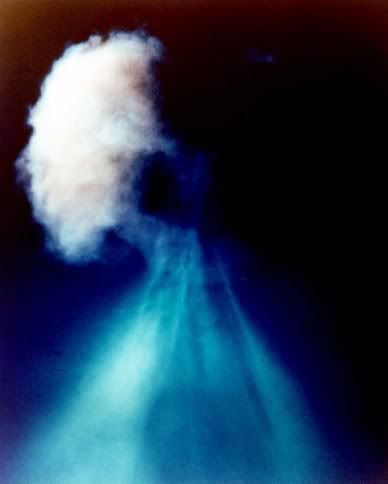
|
|
|
|
What's the difference between PAC-3 and THAAD? I know THAAD is a completely different system, but they seem like they somewhat overlap...am I way off base and their intended use is way different?
|
|
|
|
Ygolonac posted:This sounds interesting... details? http://www.f-16.net/news_article787.html tl;dr: F-16CJ (F-16 model specifically equipped to carry out the SEAD/Wild Weasel mission) pilot launched a HARM at a Patriot site after claiming the radar spiked ("locked on"/began tracking) him.
|
|
|
|
mlmp08 posted:Ok, they KIND OF overlap. Both are hit to kill kinetic weapons which can score extremely accurate warhead kills. THAAD can hit higher, though and has far greater range. If you can hit a missile farther out, you can cover a greater ground area. So PAC-3 covers a smaller footprint, but each missile is probably equally lethal once they hit a warhead. Cool, thanks. I figured that was going to be kind of a loaded question as far as what you could talk about in the open.
|
|
|
|
Smiling Jack posted:Screw the C-17 Beat me to it. But here's a C-17 doing the same thing (with a slightly smaller missile): http://www.youtube.com/watch?v=ltC18q4Td4A&feature=related
|
|
|
|
N183CS posted:Postin' an Antonov in a thread about the Cold War. Haha, I remember when that huge fucker was here. What were you doing on that side of the runway? I usually see you all parked on the other side, over on the ramp by the TA building.
|
|
|
|
N183CS posted:uhh, that pic is from Ecuador. Yeah we almost always park at TA for our pax flights. Only time we go to the far side is when we got splodey stuff on board. ....  For some reason those buildings in the background made me think "downtown Anchorage." Now that I look at it for more than 2 seconds, I see that is clearly not the case. For some reason those buildings in the background made me think "downtown Anchorage." Now that I look at it for more than 2 seconds, I see that is clearly not the case.Anyway, there really was an An-124 here earlier this year, it was hauling some Black Hawks somewhere. And that is indeed where the hot cargo pad is...which for some reason makes me laugh every time I hear it, along with "explosive movement."
|
|
|
|
So the "Cold War nuclear strategy We start near the end of WWII. The US Navy at the time had air wings that were split between three main types of aircraft: fighters, such as the F6F Hellcat and F4U Corsair, that were occasionally used for close air support ground strikes (particularly in the case of the Corsair); dive bombers, such as the SBD Dauntless and SB2C Helldiver, that were intended to carry out precision dive bombing strikes against ships and ground positions, with a secondary role as level bombers; and torpedo bombers, such as the TBF/TBM Avenger, that were intended to carry out torpedo strikes against ships, with a significant secondary capability as level bombers against ground targets. Given the advances in technology during the war, the Navy felt that these three roles (ground attack, dive bomber, and torpedo bomber) could be filled by one aircraft that would have high enough performance that it would be able to defend itself and would therefore a) not need escorting fighters and b) could be single seat, not requiring a tail gunner. The prototype Skyraider looked something like this: 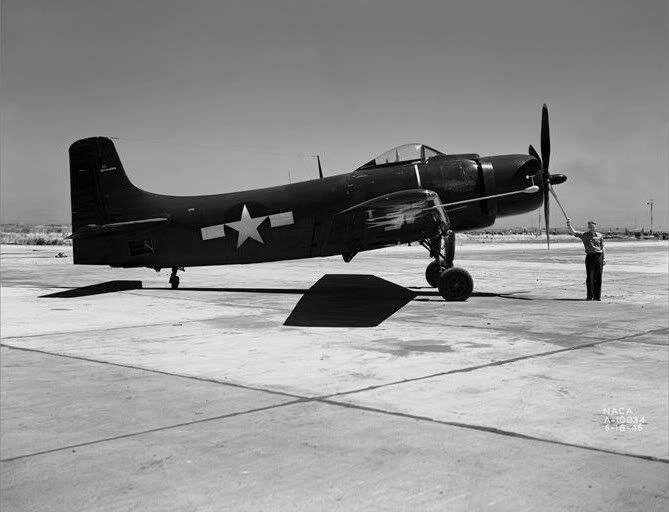 It was powered by a single R-3350 18 cylinder engine generating 2,700 hp (same engine used to power, among other large aircraft, the B-29 Superfortress). It had a rather large straight wing that enabled very good low speed maneuverability, as well as a total of 15 hardpoints (7 per wing and one centerline) that allowed it to carry a ridiculous amount of ordnance: 8,000 lbs worth, the same as a B-17. This wing also gave it a large combat radius and loiter time, especially compared to later jet powered fighter-bombers. Here's a good picture of the Able Dog's (it's first of many nicknames) combat loadout: 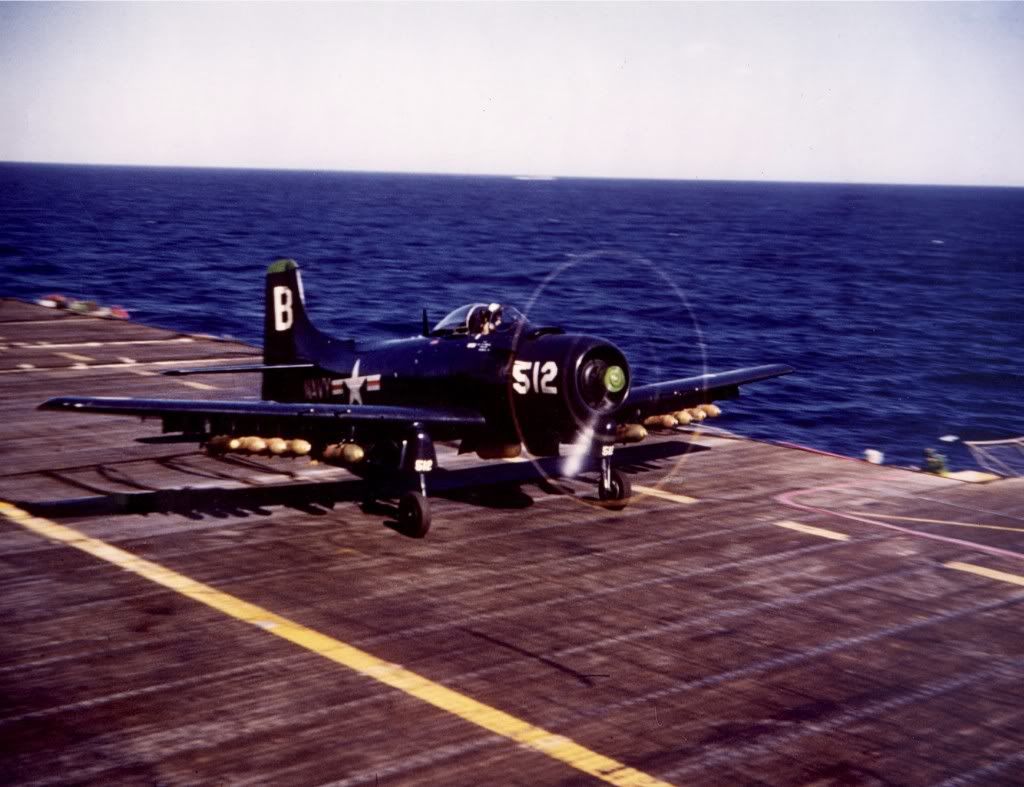 It's painted midnight blue, the color scheme of choice while in Navy/Marine Corps service during the Korea War. There will be a few other color schemes as we shall see. Also, that particular aircraft belongs to VA-195, "The Dambusters." More on that particular nickname in a bit. Before we get to that, it's worth mentioning that the Skyraider fulfilled many other roles besides simple fighter bomber. Among them were electronic countermeasures: 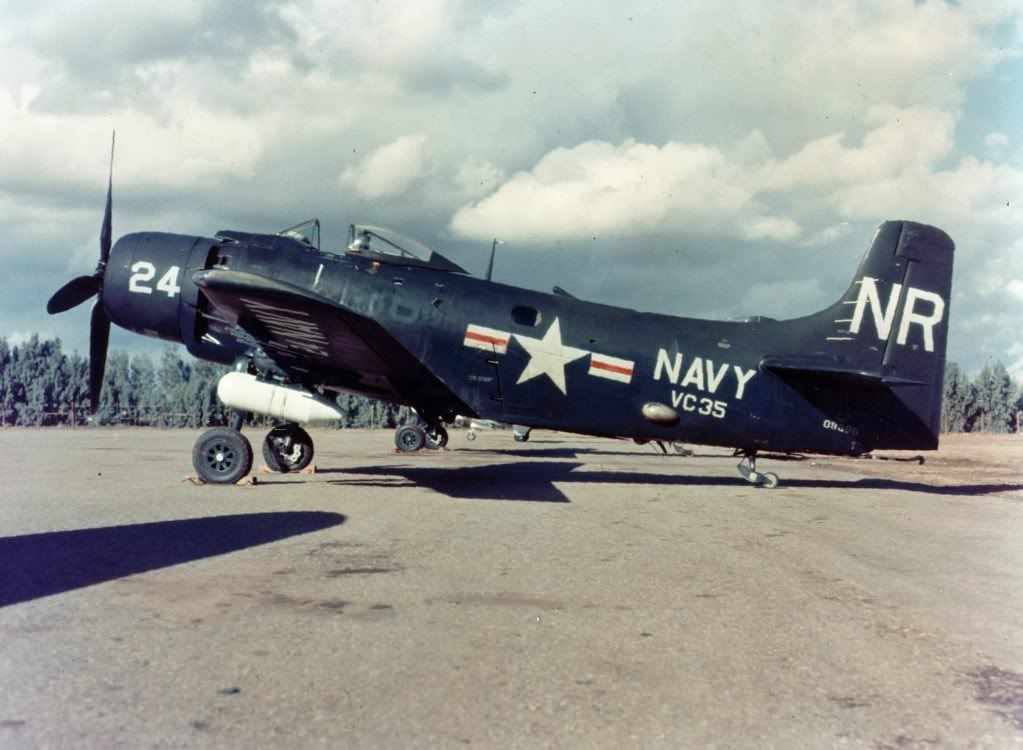 wide body four seat night attack: 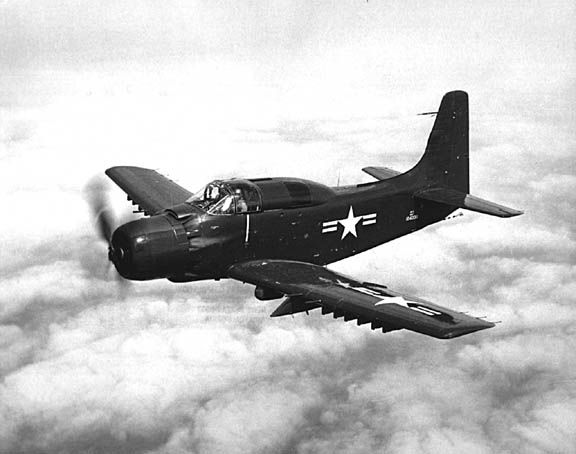 wide body airborne early warning: 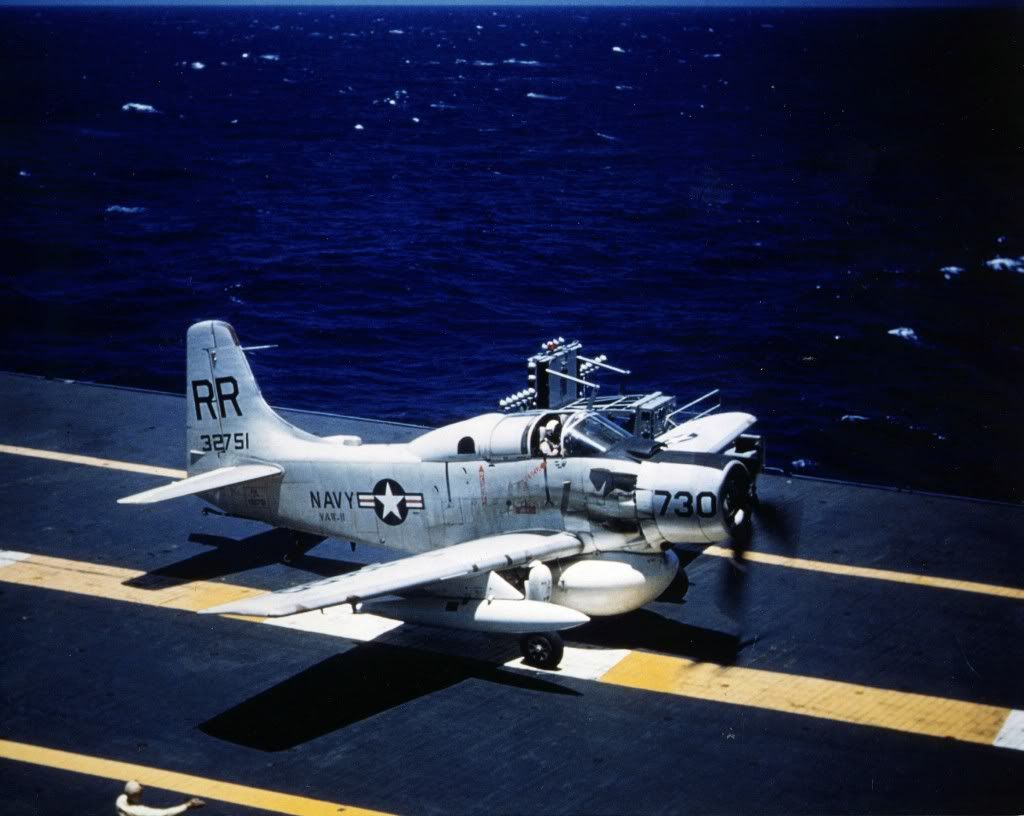 and finally back to single seat attack (featuring the later two tone gray/white paint scheme the Navy adopted in the late '50s and used into Vietnam): 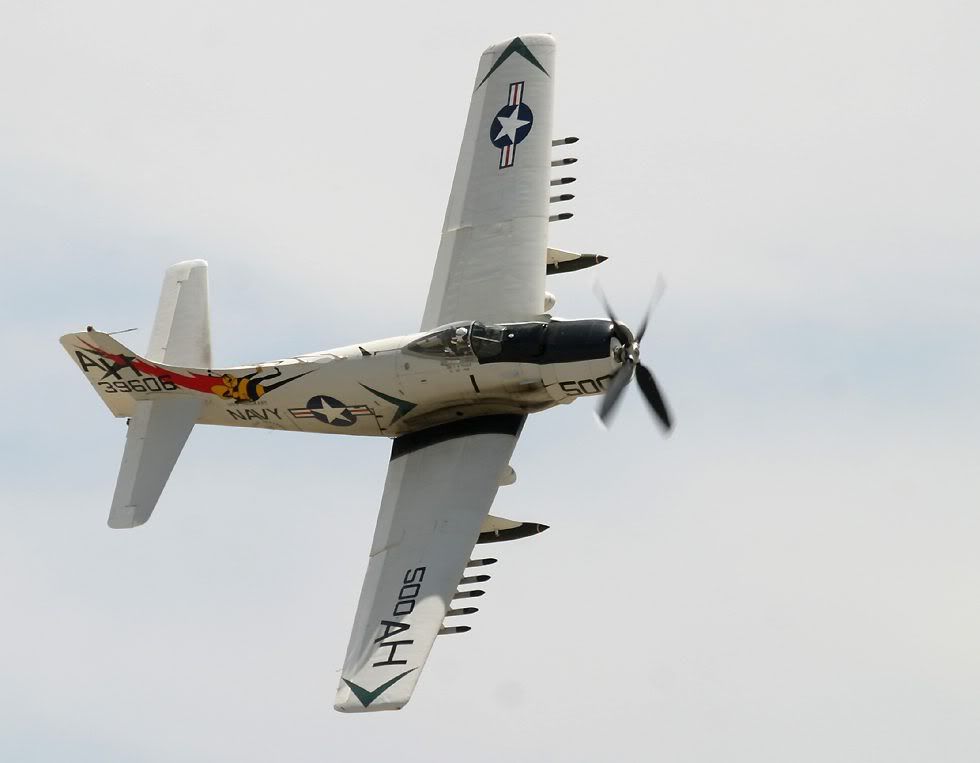 However, before we get too far ahead of ourselves, there are two missions from Korea worth mentioning. The first is the only Skyraider air to air victory of the war. A Marine night attack aircraft managed to shoot down a Po-2 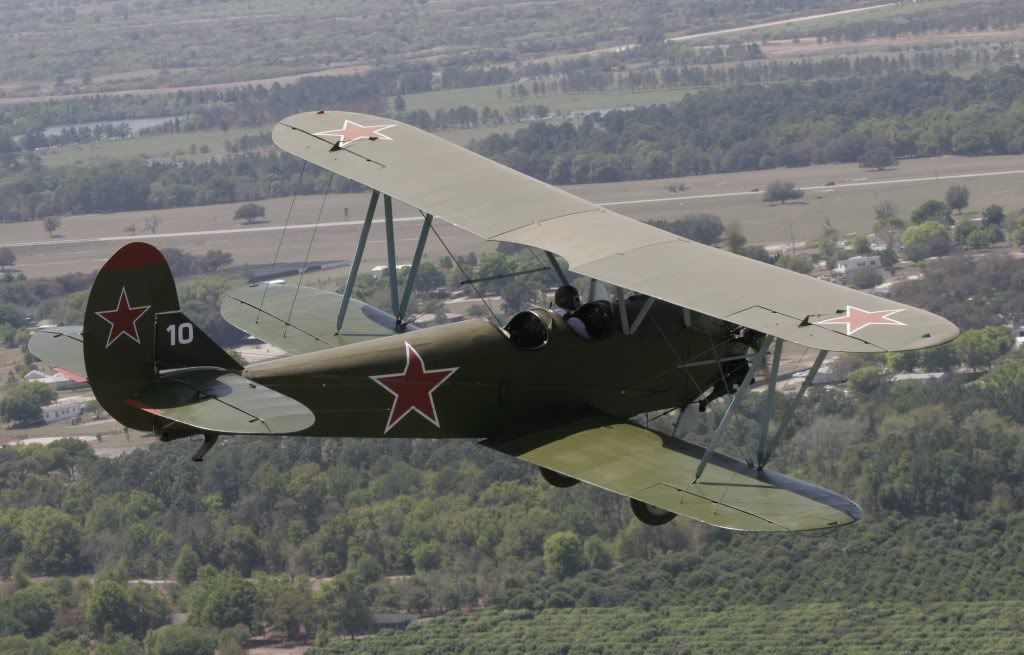 that the Korean People's Air Force would use for night time nuisance raids against UN forces. The UN troops called the aircraft Bedcheck Charlie; they actually managed to cause some serious damage and were quite difficult to shoot down because they were flying at night and the wood and fabric construction of the aircraft made them difficult to locate on radar. The second is the last combat use of aerial torpedoes by the US Navy...on a dam. 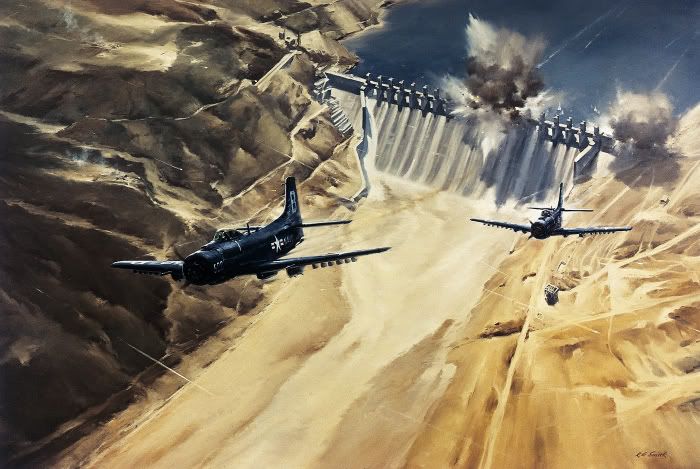 The Hwachon Dam was located across the Han River upstream from Seoul. Chinese forces controlled the dam and were using its floodgates as a weapon, opening/closing them to raise/lower the water level on the river (by as much as 4-5 feet), wreaking havoc on UN efforts to bridge the river as part of a larger offensive. After failing to capture the dam in a combined ground/amphibious offensive across the lake, and failing to disable the gates through a conventional B-29 strike, the task fell to the Navy. The first attempt used conventional 2,000 lbs bombs and 11.75'' rockets; this failed miserably as the bombs only chipped away at the reinforcing concrete while the rockets bounced off of it and careened away. After returning to the ship, the idea to use aerial torpedoes was hatched. There was a slight hiccup in that only a few of the pilots in the squadron had ever been trained in the employment of aerial torpedoes. However, after a quick overnight refresher course, the pilots launched on the mission: 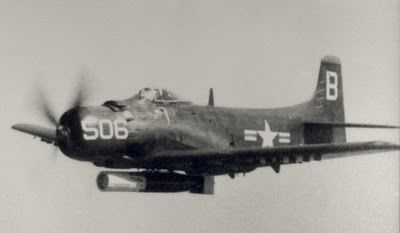 The results were a solid 6 out of 8 hits, resulting in destroying several of the dam's floodgates and removing the ability of the Chinese to control the river level. 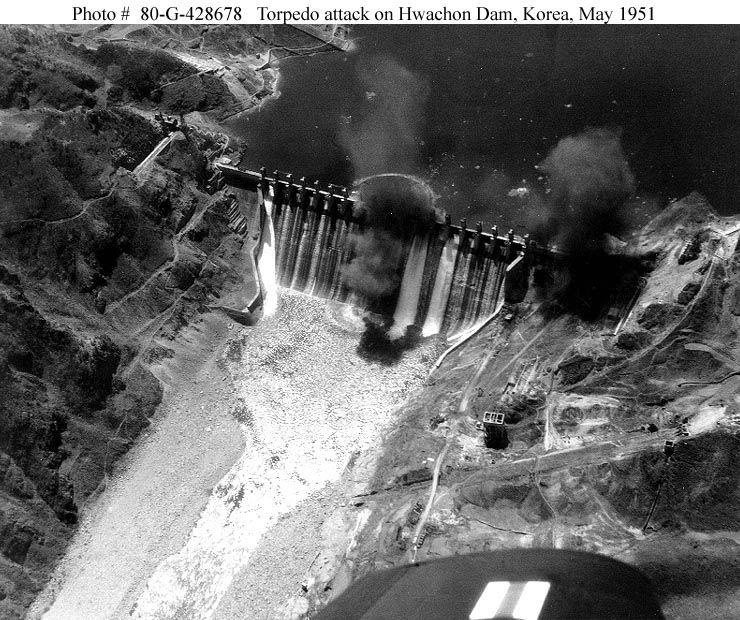 And thus VA-195 (now VFA-195) earned the nickname "The Dambusters," still used to this day. Before we move on to Vietnam, VA-195 also had another claim to fame during the Korean War...while other units dropped everything except the kitchen sink over North Korea, VA-195 went the extra mile and dropped that too: 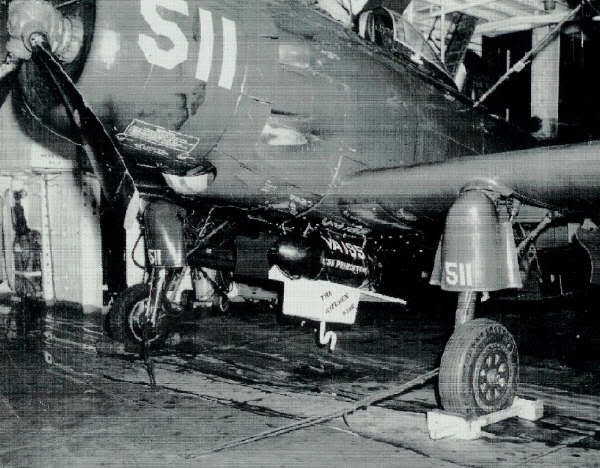 Unlike those jokers with the toilet bomb during Vietnam, VA-195 wasn't kidding around...that's a 1,000 lbs bomb attached to the toilet. They meant to do some damage when they dropped it over Pyongyang in 1952. The Skyraider remained in service with the Navy/Marine Corps post Korea, seeing a bit of action in 1954 when they engaged a couple of Chinese WWII era La-7 fighters while searching for survivors of a downed civilian airliner, shooting down two of the Chinese fighters. In the early '60s, the U.S.'s involvement in Vietnam began to heat up; while Skyraiders were slated to be replaced by jet powered aircraft (primarily A-4 Skyhawks and all weather A-6 Intruders) they served admirably in the early years of the war, taking part in the first strikes after the Gulf of Tonkin Incident. The Navy Skyraiders even managed to shoot down 2 jet engined North Vietnamese MiG-17s that had the bad luck to happen in front of its 4 20mm cannons. However, even before the war started, the Navy had begun to transfer their A-1s to the VNAF. By 1968 the Navy had withdrawn all of its Skyraiders from service, but they still had much to do with the VNAF and, gradually, with the USAF. 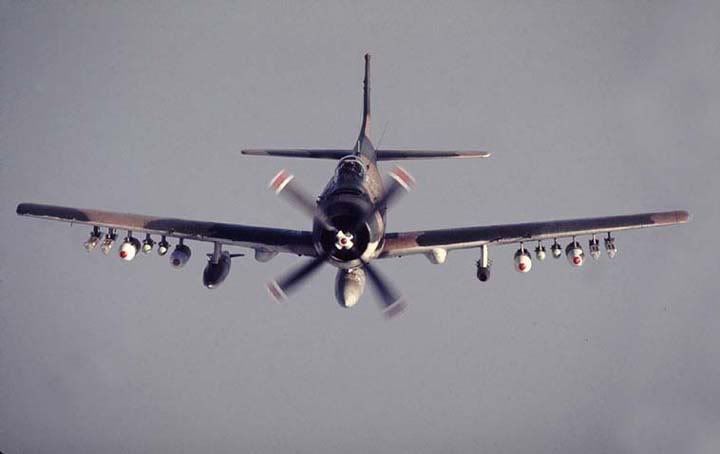 (Can't see it well, but this aircraft is wearing the standard USAF three shade green/tan camouflage pattern that it adopted later in the war). As mentioned previously, the Skyraider possessed good low speed maneuverability and a large combat radius/long loiter time, especially compared to the jet engined fighter-bombers of the time. Additionally, the Skyraider was designed from the start to incorporate armor to protect vulnerable areas (mainly the engines and flight controls). As it began to be used for more hazardous RESCAP missions (more on that in a bit) the areas that were armored began to increase, to also protect the pilot. The end result was that the Skyraider was able to limp back to base with some pretty serious battle damage:  These characteristics (low speed, long loiter time, large ordnance load, and survivability) meant that the Skyraider was uniquely qualified to serve in one of the most hazardous duties during the war, which was to be the RESCAP (Rescue Combat Air Patrol) escort for the Jolly Green Giant helicopters that would go deep into enemy territory to pick up downed pilots. The call sign for the escorts on these missions was Sandy, which became another one of the Skyraider's many nicknames. 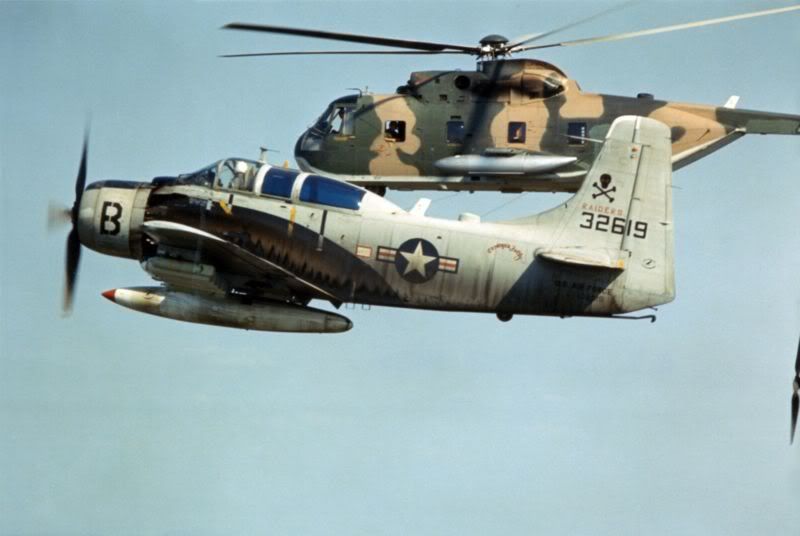  HH-3 Jolly Green Giant rescue helicopter and "fat face" Skyraider..."fat face" was the nickname given to the AD-5/A-1E models that featured side by side seating. The USAF/VNAF operated both types:  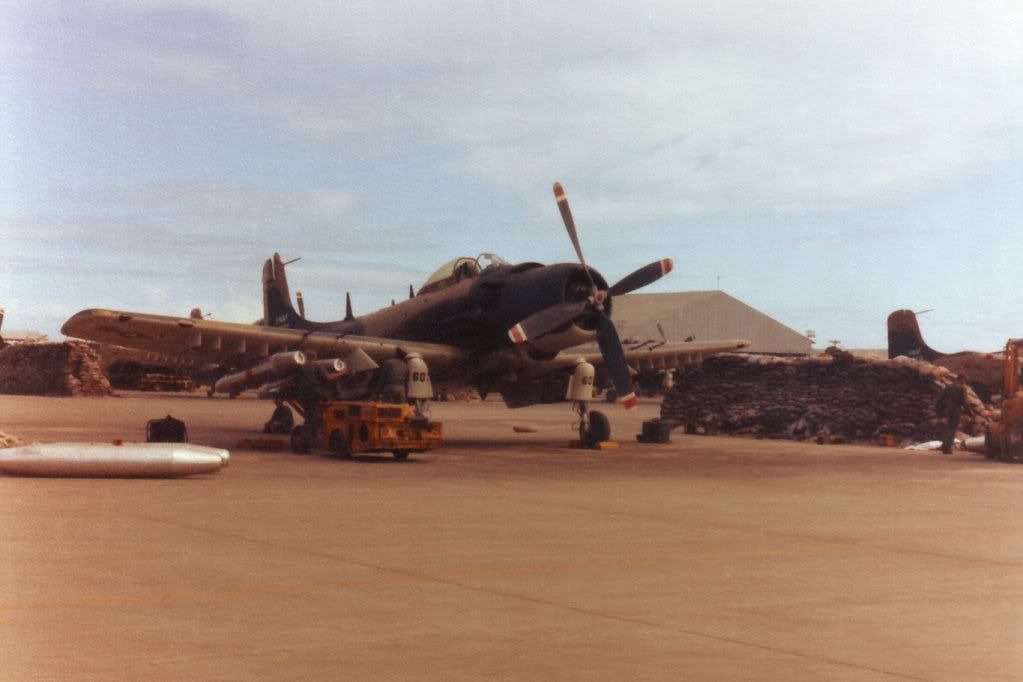 One of the most famous "fat face" Spad (another one of the Skyraider's nicknames, this one in honor of its slow speed) missions was that of Major Bernard Fisher, for which he was awarded the Medal of Honor. Major Fisher and his wingman were engaged in close air support at the A Shau special forces camp, that was under a determined attack from a few thousand NVA regulars. The hostile troops had taken control of the airstrip when Major Fisher's wingman suffered a critical hit and was forced to crashland on the enemy infested airstrip. Major Fisher elected to land on the enemy held airstrip and taxi the length of it to pickup his wingman. While under withering enemy fire (his aircraft was struck 19 times while on the ground) he managed to get enough airspeed to get airborne from the runway overrun area. 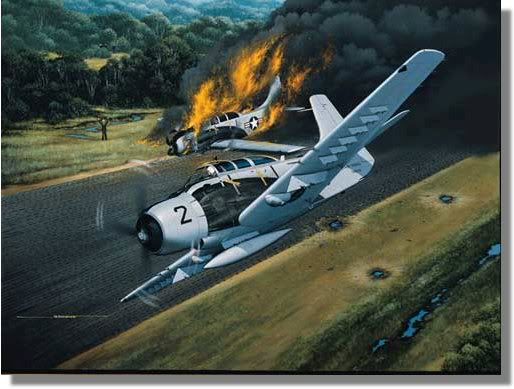 Big brass ones. An interesting postscript to that story is that the very airframe that Major Fisher was flying has actually been preserved and is on display at the National Museum of the US Air Force: 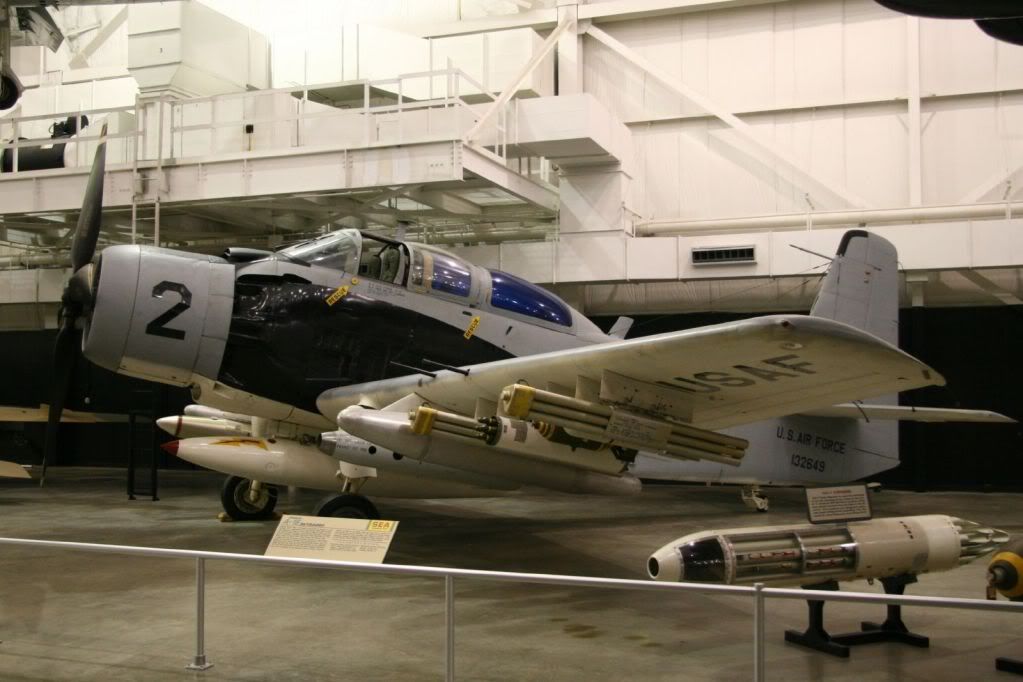 Anyway, enough about the Skyraider. Even as Vietnam was on going, there were those in the Air Force that recognized a serious problem with its current inventory. Its only truly effective ground attack/air support aircraft was a WWII era reciprocating engine design. All the aircraft it had developed over the past two decades were quite unsuited for the mission, both due to their excessive speed and their lack of combat survivability. Additionally, the Soviet Army was not getting rid of its sizable armor force anytime soon and the Army's current fleet of attack helicopters (UH-1 Huey and its offspring, the AH-1 Cobra) was quite unable to deal with any sort of armor, since they were armed only with small arms caliber machine guns and unguided rockets effective against soft targets (this issue would eventually be partially solved with the development of the TOW missile and AH-64 Apache attack helicopter). This led the Air Force to release an RFP calling for an aircraft with low speed maneuverability, long loiter time, a large ordnance load as well as a large cannon, and great survivability. In effect, the RFP was combining the best features of the Skyraider, the Soviet Il-2 Shturmovik, and the German Hs 129 Panzerknacker. That's all I have time for now, tune in next time to hear the rest of the A-X and A-10 saga.
|
|
|
|
Unrelated to the above, but kinda cool...happened across this picture earlier tonight: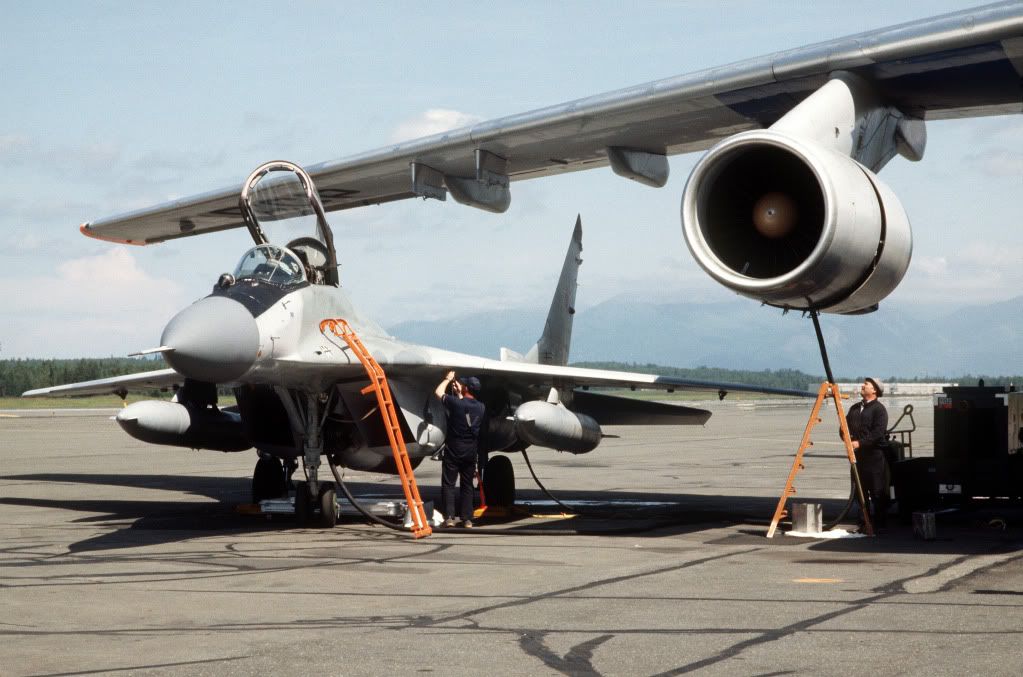 It's of a MiG-29 refueling from an Il-76 on the ground...at Elmendorf AFB...in 1990, as they were all on their way to that Canadian airshow. Check out that dude on the right wearing a loving fedora on the flightline. Also, I know exactly where they are parked, and holy crap this base has done some serious expansion since then.
|
|
|
|
SyHopeful posted:Wouldn't the Ju-87G be more analagous to the A-10 RFP than the Hs-129? Eh, maybe. The Hs-129 carried that big rear end Pak 40 anti-tank cannon that was considerably larger than the BK 37s that the Ju-87G carried. (It was actually the largest aircraft mounted gun prior to the GAU-8 coming along). Also, the Hs-129 was heavily armored (had an armor bathtub surrounding the pilot, similar to the A-10) and was specifically designed from the ground up as a low level ground attack/anti-tank aircraft, as opposed to the Ju-87 that was modified to fit that role. That said, like I mentioned Hans-Ulrich Rudel's experiences (specifically, tankbusting in a Ju-87G) did play a large role in the A-X RFP and the development of the A-10. mlmp08 posted:In mid-90s, the air force tested a kinetic kill missile that would be launched by F-15s standing by for missile launches, but it was again decided that they would be too vulnerable and would require a stupid amount of fighters on ICBM duty to get anything done, and the range wasn't fantastic. It's a little unrelated, but that reminded me of this:  F-15 launched ASM-135 ASAT missile
|
|
|
|
Ace Oliveira posted:Holy smokes. I didn't know Skyraiders were such good airplanes. And the fact that some of them actually took down jet-powered aircraft is insane, but not very surprising considering the origins of the Skyraider. From what I read of your post, the US Military basically took all the good qualities of the Navy's aircraft and put them on the A-1. Such a great aircraft. Yeah, the Skyraiders were solid aircraft...there is a reason they were adopted for use by the USAF even as the USN was beginning to retire them after a long career (they served for almost 20 years in USN service, which may not seem like much today but at the time was an eternity...this was a time frame when aircraft would be designed, enter service, and be retired in a decade). And there were only a few models of the F-86 that were modified to carry tactical nuclear weapons...the F-100 Super Sabre, on the other hand... Oh, and those two were definitely not the only aircraft to carry tactical nuclear weapons. We hung them on EVERYTHING during the early years of the Cold War...even...the Skyraider. McNally posted:F-84s, F-100s, F-105s, I think F-4s had the capability... In addition to those, you had a whole host of Navy aircraft, to include the relatively modern A-6 and A-7, as well as the still in service F/A-18, as well as an even larger number of USAF and Allied Air Forces' aircraft, to include the still in service F-16, F-15E, and Tornado. Like I said, we put tactical nukes on EVERYTHING during the Cold War. Maybe that'll be a topic for another post. Hell, we still may or may not have them in use today...look up the WS3 vault system or the NATO Nuclear Sharing program. iyaayas01 fucked around with this message at 00:32 on Dec 29, 2010 |
|
|
|
mlmp08 posted:Just got back from a day trip to Albuquerque. Went here: http://www.nuclearmuseum.org/ Very cool. Looking forward to the pics. Also, that website informed me that Richard Rhodes has another book out: The Twilight of the Bombs. Looks like I've got something else to order. Ridgewell posted:First off, you were absolutely right to call me on this. At the very least, I was unclear what I meant when I was talking about the F-106 (and actually the F-102 as well...also single seat, it carried the AIM-26 nuclear air to air guided missile) and at the most, I may have been completely incorrect. I will attempt to answer the question, although I will say that my attempts to research it further have been rather disappointing thus far. Flikken posted:I would think it has something to do with the nature of the nuclear mission since the F-106 was firing an Air to Air Missile(probably over uninhabited/friendly territory) and therefore defensive in nature there probably wasn't a need for a national command authority release of the weapon and the pilot could act independently?? This is, actually, to my knowledge more or less correct. While it probably wouldn't be the case today (especially with the prevalence of sophisticated PALs in the U.S. arsenal...more on those in a bit) at the time a low yield (sub kiloton) truly tactical weapon like an air to air weapon or a Davy Crockett nuclear recoilless rifle would have been in the hands of a relatively junior officer and would've been intended for fairly short notice use...working our way down from the top, a strategic level weapon like an ICBM or strategic bomber is going to only be used in extraordinary circumstances and send an unmistakable message of "I'm done loving around; let's destroy the world together." These are the very definition of what the National Command Authority need to keep a tight leash on. The next rung on the ladder would be theater/"tactical" level weapons, like IRBMs and strike fighter carried weapons. These are going to be some of the more dangerous ones because while they aren't technically strategic level weapons, their impact will be felt at the highest levels of government as they have the potential to do severe damage to fielded forces, as well as not inconsequential damage to surrounding civilian populations. The danger comes when they are perceived as "tactical" and have the use delegated to a lower level...the widespread use by NATO of these "tactical" kiloton yield weapons on conventional Soviet forces pouring through the Fulda Gap would've been the most likely trigger for escalating a Soviet invasion of Europe into global thermonuclear Additionally, a truly tactical weapon would be intended for very short notice use...communication in those days wasn't the best; "real-time" comms on the scale of going direct from the NCA to forces deployed in the field were still a fantasy. As such, a bomber or ICBM may have between a few hours and 30 minutes to respond to a provocation and would have a hardened communications infrastructure in place to convey any orders...the Davy Crockett will have a few hours, tops, between "durr durr durr, goin' to pick up a fraulein" to "HOLY loving poo poo THE SOVIETS ARE COMING!!!!" and, oh by the way, you're now in the middle of a combat zone and communication between you and your battalion is lovely, to say nothing of beyond that, and several Soviet tank columns are rolling up on your understrength company's positions holding a strategic crossroads and "WHAT DO WE DO, SIR?!?" In the case of the air to air missile, you're looking at a matter of minutes from "hey, there's Boris and the gang, flying right up to the coast again" to "...did he just speed up...and turn towards shore...gently caress, they're on an attack profile and, poo poo, they just launched their cruise missiles, too late now" LavistaSays posted:Pretty sure the difference here is that these small tactical nukes wouldn't be a first-strike option so that during peacetime they would be locked up in a munitions depot magazine with all of the "two man" safeties in the world. A pilot wouldn't have these bolted to his hard mounts during normal peace time operations. Space Gopher posted:I think the idea was that the nuclear air-to-air weapons were the only place where one person had complete control over the weapon. The tactical bombs could have been carried by various single-seat attack aircraft, but (presumably) they never actually flew that way. The interceptors, on the other hand, (probably) actually carried live nukes with a single finger on the button. This is actually (at least somewhat) incorrect. NATO strike fighters (F-100s, F-104s, F-4s, Tornadoes, F-16s, etc.) during the Cold War stood what was called Victor Alert or Quick Reaction Alert fully fueled, armed with a few "tactical" kiloton range weapons, and prepped in hardened shelters at the end of the runway ready to go on a minutes notice. The question becomes whether or not they actually ever flew this way, and if they did fly, were the PALs enabled? PALs are Permissive Action Links which are, in a nutshell, a very complex sophisticated "lock" on a nuclear device that prevents unauthorized tampering/detonation. PALs were first instituted on U.S. nuclear devices in the early '60s due to two reasons: first, the U.S. political establishment did not trust (with good reason) some of its military's leadership. Second, the NATO Nuclear Sharing Program had U.S. weapons deployed in foreign countries at foreign bases for employment by foreign troops; the weapons remained ostensibly under the "control" of U.S. personnel, which posed a threepronged issue: first, since they were on a foreign base and would be employed by foreign personnel, the weapon was arguably under the control of a foreign government, a violation of federal law; second, that possible control posed a more practical problem, which was that if the government of one of those nations decided to go rogue and order its military to attack, there might be little the U.S. personnel at the base could do to stop them, particularly if it was on, for example, a jet that was already cocked on Victor Alert; and finally, these deployments by design put the weapons into closer proximity to the Soviet Union, making their possible capture in the event of war a more likely possibility. The PALs were designed to ease all these concerns by providing the NCA with a means to retain absolute control over all nuclear weapons (even if military personnel had physical access to a weapon, they would be unable to fully arm it without the PAL codes, which would only be given in a properly authenticated Emergency Action Message that would only be able to be properly interpreted by U.S. personnel) and by ensuring that any unauthorized attempt to access/use the bomb (by a friendly foreign government or by Soviet forces) would result in the bomb deactivating itself to the point of, at a minimum, requiring extensive maintenance at a U.S. facility. While on alert, aircraft would still be following the two person concept, in that there would always be at least two people in the presence of the aircraft (usually the pilot and crew chief). However, if/when the plane launched, if the plane was single seat they would be violating the two person concept even if the weapon's PAL had not been enabled. I do distinctly remember reading that bit about the F-102/F-106 somewhere, and it wasn't somewhere random...it was a fairly credible source. Unfortunately, I can't remember where. Ultimately, I believe this is what the thought process was and what I should've written: F-102s/F-106s were the only times when the two person concept was routinely violated, as they would regularly fly with nuclear armed missiles. The aircraft on Victor Alert would fly occasionally, but it was generally in response to a mock scramble, and they would only remain airborne for a short period of time...they wouldn't regularly tool around the sky armed with nuclear bombs, because weather in Western Europe is terrible much of the year and the mishap rate among NATO tactical fighters in the '50s and '60s (and even into the '70s and '80s) was ridiculously high. Not exactly the kind of environment you want to regularly be carting nuclear weapons around in. The only time that such aircraft would be airborne for an extended period of time would be in response to a real alert where they would be jetting east to turn the East from red to charred glowing black. As an aside, fun fact about the PALs...the U.S. military leadership was so opposed to them, ostensibly because of worries that the codes would prevent the weapons from being employed in an expedient manner, that SAC ordered as a matter of written policy that the PALs on ICBMs be set to 000000000. Kind of defeats the purpose...this wasn't changed until the late '70s, almost two decades after PALs were first ordered on all U.S. nuclear weapons. Of course, they weren't on ALL weapons until the late '80s. Space Gopher posted:As far as the two-man rule at the top level, I think the idea is that if the President wakes up with a bad case of Alzheimers and decides to outlaw Russia forever, the Secretary of Defense will have a bit of latitude to say, "gently caress you, sir." Yes, in theory there's the chain of command, but in reality it's never quite that absolute. It's more than a bit of latitude...the concept of a two person system starting at the top is what underpins the entire system we have set up. If there was a shred of doubt that a properly authenticated launch order EAM was in some way wrong, our entire nuclear deterrence system would collapse. Crimson Tide actually does a pretty decent job of exploring this subject, even if it had stupid poo poo for the sake of drama and gets a lot of the technical aspects wrong. The other guy in a release of nuclear weapons scenario doesn't have a "bit of latitude" to say "gently caress you, sir," he is REQUIRED to say that if he feels it is an invalid launch order. iyaayas01 fucked around with this message at 17:00 on Dec 29, 2010 |
|
|
|
rossmum posted:iyaayas, since you're ammo, any chance of a post on bomb trains? Those things always fascinated the poo poo out of me. If you're talking about explosives trains, like how you detonate something, then absolutely. If you're talking about something else, you'll have to explain what it is you're talking about.
|
|
|
|
mlmp08 posted:while we're on requests, anything you can post on glide-bombs without getting into classified info would be awesome. So you're talking unpowered guided weapons...like GBU-15, JSOW, etc.? I don't have much experience with those (outside of the JDAM, of course...but whether or not that's actually technically a "glide bomb" is debatable) since being at an F-22 base means we do mainly air to air. But I am not completely ignorant, so I should be able to gin something up.
|
|
|
|
The A-5 was the only aircraft to carry things that way...it had what was called a linear bomb bay: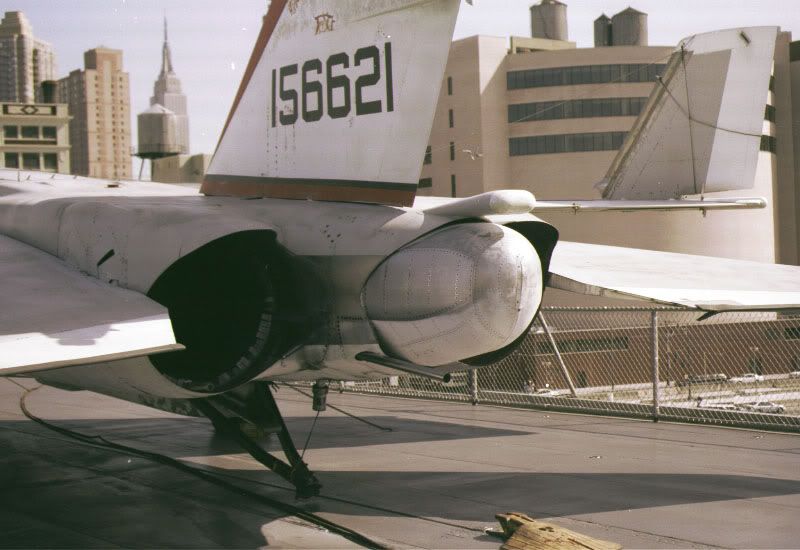 What this meant is that since it was originally designed to only carry a single nuclear weapon (similar to the Air Force F-105) it carried said weapon internally, in a tunnel between the engines. The tunnel was considerably longer than the length of the weapon, so they put a few extra disposable fuel tanks in there, attached to the bomb. When employing the weapon the whole assembly was fired rearward out of the bomb bay at roughly 50 m/s. So basically, this aircraft was designed to poo poo out a nuclear warhead. The system wasn't very reliable, and they never actually carried a live weapon in the bay.
|
|
|
|
NosmoKing posted:That's almost as dumb as the 'over the shoulder toss' method of low level, but don't blow yourself up, delivery of nukes by tree skimming fast movers. More or less, they came in at treetop level, pulled into a loop, and as they were passing the target they released the bomb so it went backwards and up. The fighter theoretically had enough time to get away from the area before the bomb came back down and blowded everything to smithereenies This method actually had a much better chance of surviving, as it was intended for use at medium altitude, so the jet would have (probably) had enough time to get far enough away from the detonation, although it would've been less accurate, as the over the shoulder toss enabled some pretty good accuracy (you could use the target as a reference point going into your toss) while the "poo poo out the back" method of delivery imparted an uncertain acceleration to the weapon in the opposite direction of travel, greatly complicating any ballistic calculations. And Fake edit: Actually, since I'm not tired and the scotch glass is only half empty, gently caress it, here we go... Let's say you were the head honcho of SAC during the early days of the Cold War. You were planning new and more inventive ways to blow those godless commie heathens back to the stone age, yet you faced a rather large problem: while your strategic bombers were indeed a formidable force, they were still limited in number, and some of the many targets would have been left uncovered in the initial wave of an attack. Fortunately for you, two new technologies have just become commonplace: air to air refueling, and fighter sized strike aircraft capable of carrying the now considerably lighter nuclear ordnance. Examples of said fighter sized strike aircraft: 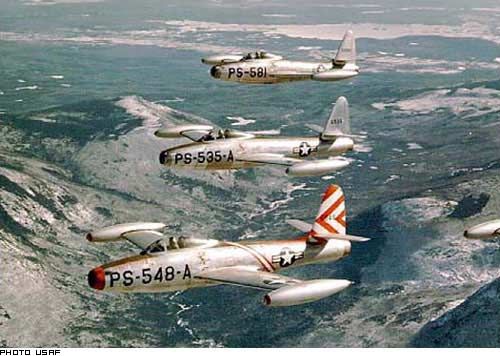 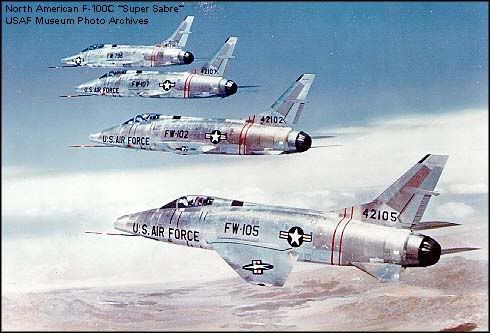 And yes, as mentioned before,  Unfortunately for you, these developments added further complications. For starters, most of these aircraft were single seat and lacked the specialized navigation equipment that your strategic bombers carried. No problem, the fighters would just strike at low level, using the time honored basic navigation techniques of visual landmarks and dead reckoning, honed by lots of memorization of the landmarks along the intended strike path and extensive practice along training runs in the U.S. and Western Europe that had similar topography. This had the added benefit of allowing them to fly beneath Soviet radar coverage, decreasing the warning the Soviets would have of the impending attack. However, this move to low level strike introduced another complicating factor: nuclear weapons are very destructive, and delivering a weapon at low level in a conventional laydown manner would result in the very likely destruction of the delivering aircraft. Of course, given that this was World War III and the pilots would likely be dead before being able to return to their base anyway, this may not have made much of a difference regardless, but generally speaking pretending there's a chance of survival is better for morale as opposed to telling your pilots it's an absolute suicide mission. What to do? This was the solution that was developed:  That, in a nutshell, is the LABS There were actually two different methods developed for LABS...the first is a conventional toss, where the aircraft enters a relatively shallow (15-20 degree) pitch-up prior to release, to loft the weapon to the target. This allowed the delivering aircraft to forgo directly overflying the (probably) heavily defended target, but it also required a known fixed visual landmark to correctly gauge the toss distance. The other method, which was the preferred one, was the over the shoulder method. As shown above, this involved a sharp pitch up almost directly over the target, lofting the bomb several thousand feet into the air. This method had the advantage of allowing the striking aircraft to approach from any direction; all that was necessary was that the striking pilot be able to see the target. By the mid '50s SAC had 6 wings worth of F-84 aircraft that were deployed to Europe via inflight refueling on regular basis. However, its premier strategic bomber, the B-47 (seen below) faced an issue...Soviet defenses were improving, and its designed high altitude attack profile would leave it too vulnerable to interception.  Solution? Put LABS on it too! 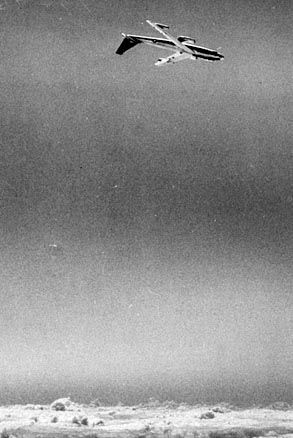 Yes, SAC had its 6 engine strategic bomber fly a low level attack profile designed for tactical fighters that culminated in a full loop half roll (i.e., first half of a Cuban Eight) aerodynamically demanding maneuver. This was the Cold War, era of the nuclear depth charge and mortar...compared to those, this was small potatoes. The maneuver itself involved a 2.5 g pull up (the aircraft had a structural limit of 3 g's; anything beyond that risked catastrophic structural failure) followed by flying the aircraft vertically on thrust alone around 85 knots, buffeting right on the edge of a stall. While it was never conclusively proven to a direct result of flying LABS missions, the B-47 fleet suffered serious wing fatigue issues while it was flying the low level LABS missions (probably a combination of the low level flight and the sharp pull ups); 6 aircraft had their wings simply shear off while on low level LABS training missions. This, combined with the introduction of the more capable B-52, led to the removal of strategic bombers from the LABS missile profile. However, in the meantime TAC (Tactical Air Command, the "fighter" air command during the Cold War) had taken over the strike fighter nuclear mission from SAC and was standing Victor Alert on NATO airbases (described earlier in the thread) with its F-100 Super Sabres (aka "Huns".) As mentioned above, the Air Force were not the only ones to use the LABS...the Navy got in on the action with its reciprocating engine powered Skyraider. These aircraft were designated to fly 13+ hour 2,000 mile long missions, cruising along at 140 knots and 50 feet. Here's a link that describes a Skyraider mission far better than I could, so go and read that. Here's just a few fun facts about the Skyraider missions, though...the weapon the aircraft was supposed to carry was the Bureau of Ordnance Aircraft Rocket (BOAR) that was just a Mark 7 nuclear bomb with a rocket attached, intended to give the weapon more loft enabling the aircraft to better escape. Of course, their chances of actually escaping the fireball and blast were slim...one pilot was given the opportunity to deliver a real live (albeit inert) weapon. After delivery, he was 1,100 feet away from the bomb when the explosive charges detonated (when the bomb would've gone off). Surviving a 60 kT at a range of 1,100 feet is a dubious proposition, to say the least. Here's what a few of the Skyraider's pilots' survival plans were (assuming they survived the delivery of their weapons): "Some of us," he recalled, "scouted out very remote locations in Japan that would offer no appealing targets for the Russians. We figured to land on the roadway or wheels up and go live in the mountains for a while." Rather fatalistic times. Anyway, here's a video of a B-47 performing a LABS delivery, and here's a very good Air and Space article on the whole system. Hope you enjoyed that, I've had several beers and a fair amount of Scotch, so any errors were not my fault. iyaayas01 fucked around with this message at 16:01 on Jan 2, 2011 |
|
|
|
Ace Oliveira posted:
To briefly answer this, sort of but not really. It's important to remember to avoid mirror imaging when comparing/contrasting geopolitical entities, particularly regarding comparable military forces on opposite sides during the Cold War (or even today...reference A is the current hullabaloo over the Chinese J-20 being a F-22 CLONE THE END IS NEAR...anyway). The Soviets faced a completely different set of challenges and threats than U.S./NATO forces. U.S./NATO forces faced overwhelming conventional superiority on the part of the Soviets as well as a geographical separation (the Atlantic) between the battlefield and the bulk of follow on reinforcements...this drove another threat, which was the possible closure of the North Atlantic sea lanes. The Soviets, on the other hand, faced the threat of quick U.S./NATO nuclear strikes from Western Europe as well as U.S. carrier battle groups in the Atlantic. As such, their deployment of tactical nuclear weapons was in three main areas: first, on submarines (both torpedoes and cruise missiles) and medium-long range bomber aircraft (carrying long range cruise missiles...the Tu-22M Backfire/AS-4 Kitchen combination is the best example of this) to strike at the carrier battle groups in the North Atlantic; second, larger warheads (high kiloton to low megaton range yield) on short to medium range ballistic missiles (and, to a lesser extent, medium-long range bombers like the Backfire) to serve as a short notice strategic weapon against NATO countries in Western Europe, both as a counterforce strike against high value targets in the NATO military command structure and as countervalue against population centers; and finally, lower yield truly tactical weapons to be used in a variety of ways against fielded NATO forces once the conventional war went nuclear as it inevitably would given NATO's quantitative (and, to some extent, qualitative) inferiority regarding conventional forces. Ironically, now that has almost completely reversed as the Russians are still holding on to large amounts of tactical nuclear weapons post Cold War as a deterrent against the both quantitative and qualitative conventional superiority of U.S./NATO forces. iyaayas01 fucked around with this message at 16:29 on Jan 2, 2011 |
|
|
|
What you're describing is just an extreme version of normal toss bombing, which was an option for the LABS (as well as normal delivery of conventional bombs). In that case the bomb was still lofted towards the target, the aircraft just continued the half loop and half roll (basically the first half of a Cuban Eight). Here's a diagram that show the difference: (top picture is "traditional" toss bombing, where the aircraft pops up, tosses the weapon towards the target, and then continues forward to overfly the target; the bottom picture is of the type of toss bombing you describe, where the weapon is tossed towards the target and the aircraft performs a half Cuban Eight to fly back in the other direction): The diagram I posted before could be a bit misleading if you interpreted it incorrectly as having the aircraft performing a full loop. What the aircraft did was still a half Cuban Eight, like this: 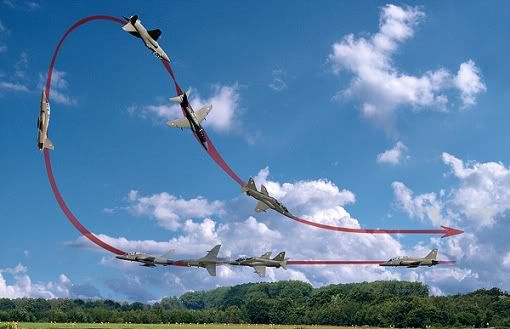 The aircraft would pitch-up sharply and release the bomb after it passed 90 degrees vertical (usually around 135 degrees) and toss the bomb "behind" the pilot (hence the "over the shoulder" description). The aircraft would continue the half loop towards the ground, roll 180 degrees back to upright, and would haul rear end. The reason it might be confusing is that most diagrams (like the half Cuban Eight one I posted above) show the aircraft in only two dimensions...since aircraft travel in three dimensions, this is inaccurate. Which brings me back to the diagram contained in the original post...looking at it, try and perceive it as having the F-84 coming in from your rear left quarter, overflying the target, pulling up beyond the target, releasing as it passed through the vertical, having the bomb fly in the arc towards the target while the aircraft flew through the half loop and rolled upright, flying back towards your right quarter. Hopefully that made sense? Maybe this will help a bit:  Unrelated to that discussion, here's a picture of needles indicator part of LABS that I described earlier: 
|
|
|
|

|
| # ¿ Apr 27, 2024 17:26 |
|
Agustin Cienfuegos posted:
AC-119 will make you love it: 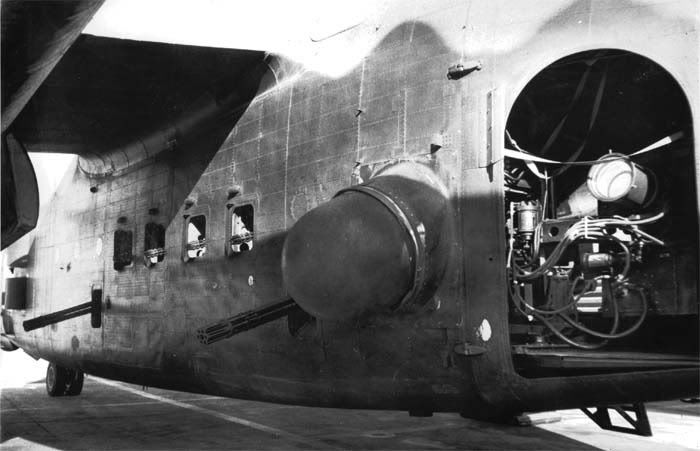 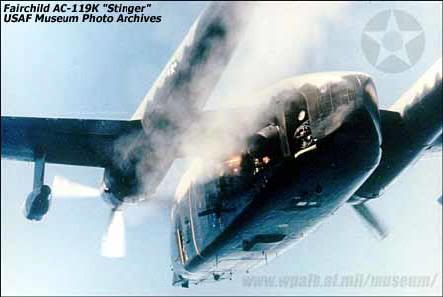 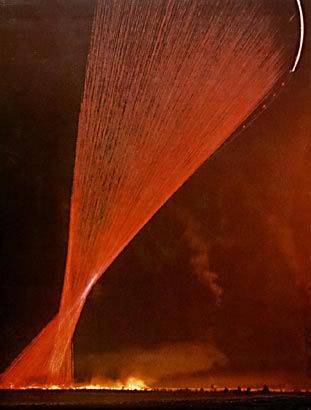 That was a pretty cool spy satellite write up.
|
|
|



 Fun Canadian History Fact
Fun Canadian History Fact 









